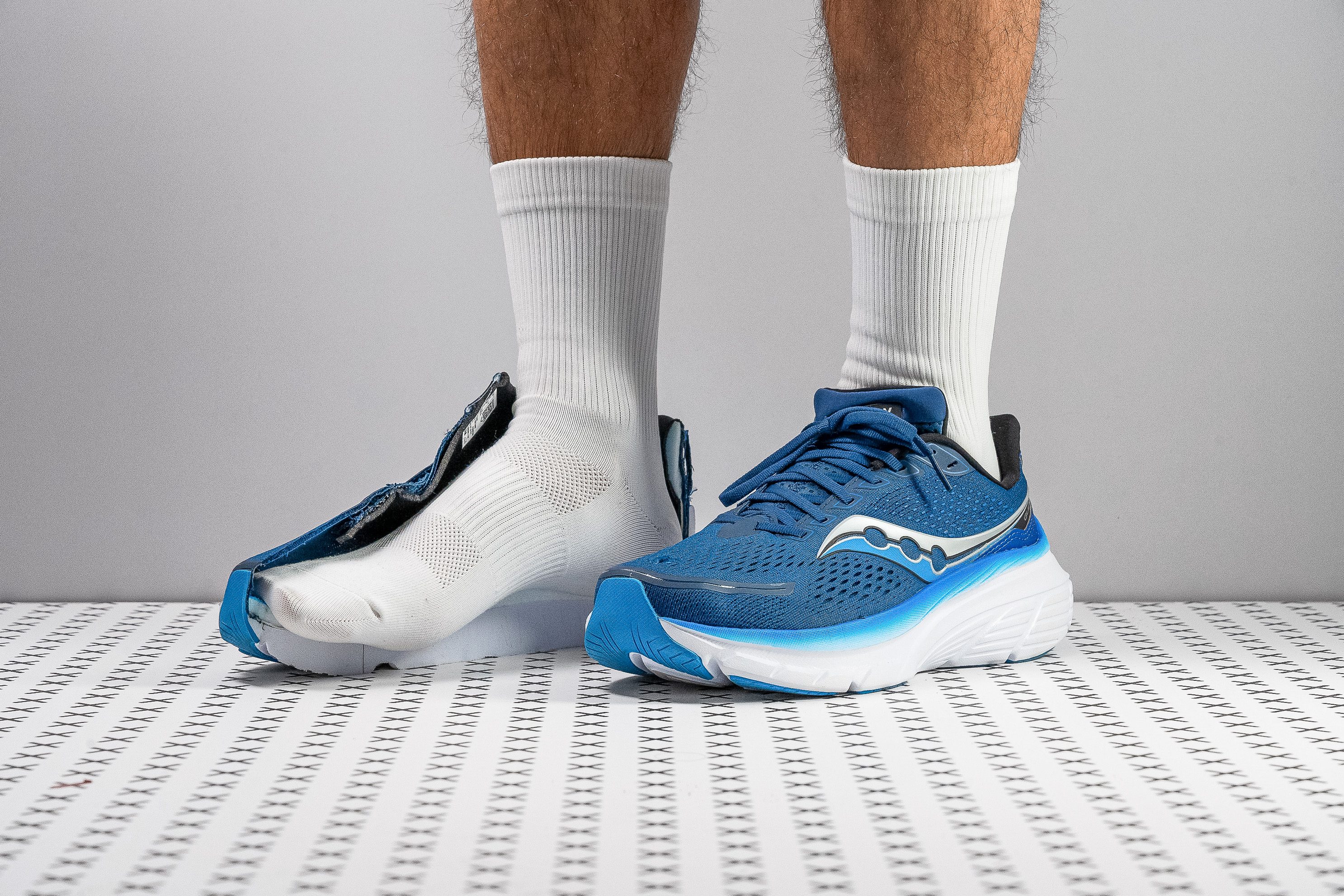Our verdict
- Top pick in best running shoes for flat feet (2024)
- Top pick in best stability running shoes (2024)
Pros
- Enhanced stability features
- Improved stack height
- Lightweight
- Fairly priced
- Smoother transitions with new rocker
- Premium PWRRUN+ sockliner
- Premium PWRRUN+ sockliner
Cons
- Grip could be better
- Less agile than before
- Exposed midsole
Audience verdict
- Top 17% in road running shoes
- Top 10% in Saucony running shoes
- Top 24% most popular running shoes
Comparison
The most similar running shoes compared
+ + Add a shoe | |||||
|---|---|---|---|---|---|
| Audience score | 90 Superb! | 81 Good! | 89 Great! | 83 Good! | |
| Price | £135 | £130 | £130 | £160 | |
| Pace | Daily running | Daily running | Daily running | Daily running | |
| Shock absorption | Moderate | Moderate | Moderate | Low | |
| Energy return | Moderate | Moderate | High | Low | |
| Traction | Moderate | High | Moderate | Moderate | |
| Arch support | Stability | Stability | Stability | Stability | |
| Weight lab Weight brand | 9.7 oz / 275g 9.5 oz / 269g | 9.8 oz / 278g 9.6 oz / 272g | 9.8 oz / 279g 9.8 oz / 278g | 11.6 oz / 329g 11.3 oz / 320g | |
| Drop lab Drop brand | 7.0 mm 6.0 mm | 8.3 mm 6.0 mm | 10.0 mm 10.0 mm | 7.9 mm 10.0 mm | |
| Strike pattern | Mid/forefoot | HeelMid/forefoot | HeelMid/forefoot | Mid/forefoot | |
| Size | True to size | True to size | True to size | True to size | |
| Midsole softness | Balanced | Balanced | Balanced | Balanced | |
| Difference in midsole softness in cold | Small | Small | Small | Normal | |
| Toebox durability | Decent | Good | Decent | Good | |
| Heel padding durability | Good | Decent | Bad | Good | |
| Outsole durability | Good | Good | Decent | Good | |
| Breathability | Moderate | Breathable | Moderate | Moderate | |
| Width / fit | Medium | Medium | Medium | Narrow | |
| Toebox width | Medium | Medium | Wide | Medium | |
| Stiffness | Moderate | Moderate | Flexible | Moderate | |
| Torsional rigidity | Moderate | Stiff | Moderate | Stiff | |
| Heel counter stiffness | Stiff | Flexible | Stiff | Moderate | |
| Heel lab Heel brand | 34.9 mm 35.0 mm | 36.0 mm 35.0 mm | 33.1 mm 36.0 mm | 33.2 mm 31.0 mm | |
| Forefoot lab Forefoot brand | 27.9 mm 29.0 mm | 27.7 mm 29.0 mm | 23.1 mm 26.0 mm | 25.3 mm 21.0 mm | |
| Widths available | NormalWideX-Wide | NormalWideX-Wide | Normal | Normal | |
| Orthotic friendly | ✓ | ✓ | ✓ | ✓ | |
| Season | All seasons | SummerAll seasons | All seasons | All seasons | |
| Removable insole | ✓ | ✓ | ✓ | ✓ | |
| Ranking | #101 Top 16% | #303 Bottom 18% | #110 Top 30% | #251 Bottom 32% | |
| Popularity | #159 Top 24% | #59 Top 16% | #259 Bottom 30% | #159 Top 43% |
Who should buy
In our lab tests, the Saucony Guide 17 emerged as a top pick for:
- Lovers of the Guide series looking for the most dynamic version yet.
- Those in need of a moderate stability shoe that offers solid value and a comfortable upper.
- Runners with a mild pronation or a neutral stride seeking a reliable daily trainer with just the right amount of non-intrusive support.
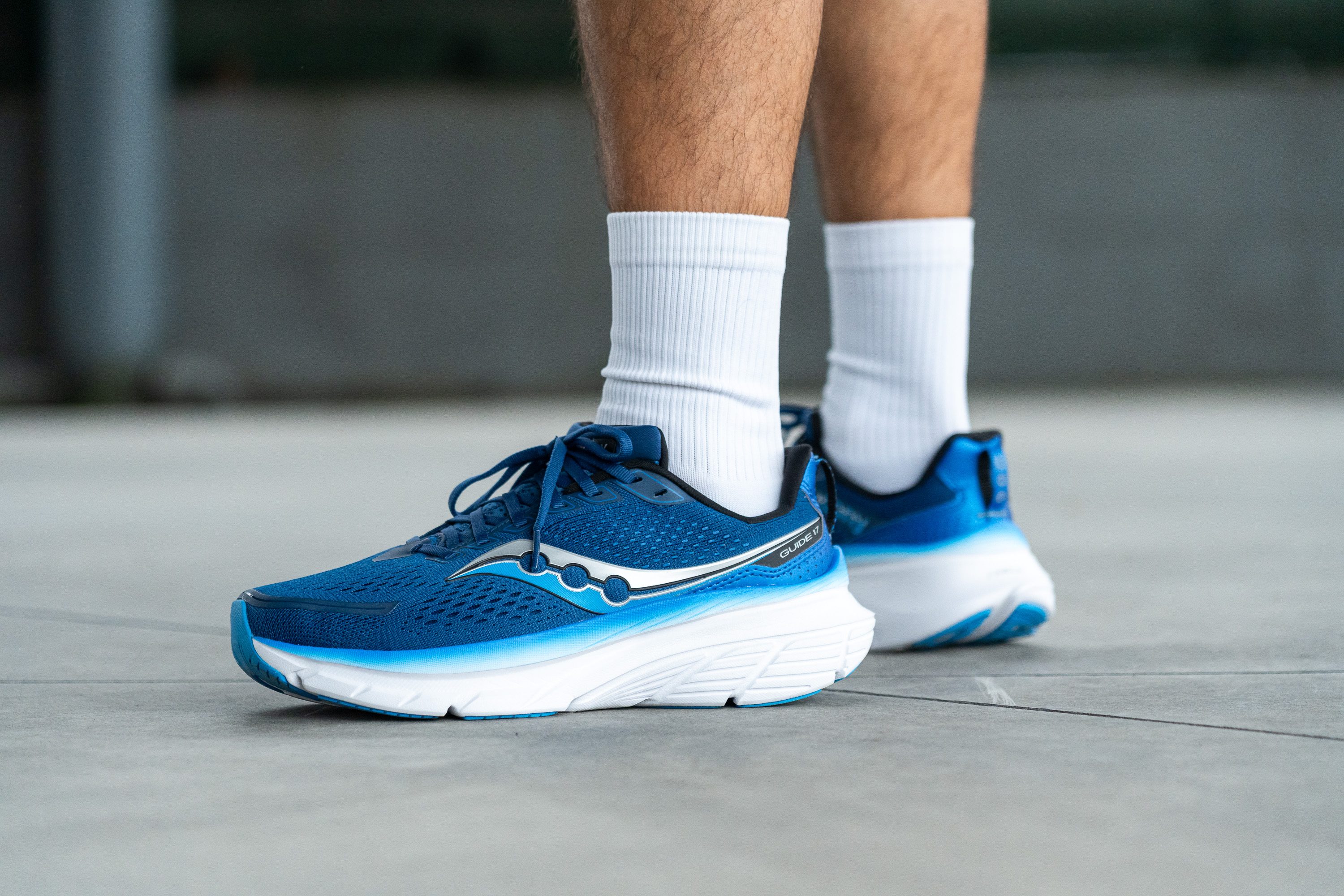
Who should NOT buy
In our testing of the Saucony Guide 17, we've noted it lacks the energetic underfoot feel many runners look for—its ride can feel somewhat dull. Runners seeking a more lively bounce would do well to consider the ASICS Gel Kayano 30, which offers a superior midsole. And for those prioritising a lighter shoe, the Hoka Arahi 7 emerges as the top choice.
Moreover, we believe the Guide 17 may not be the best fit for those with severe pronation issues. It has moved away from traditional stability features, and for those in this category, there are more suitable options on the market like the Hoka Gaviota 5.
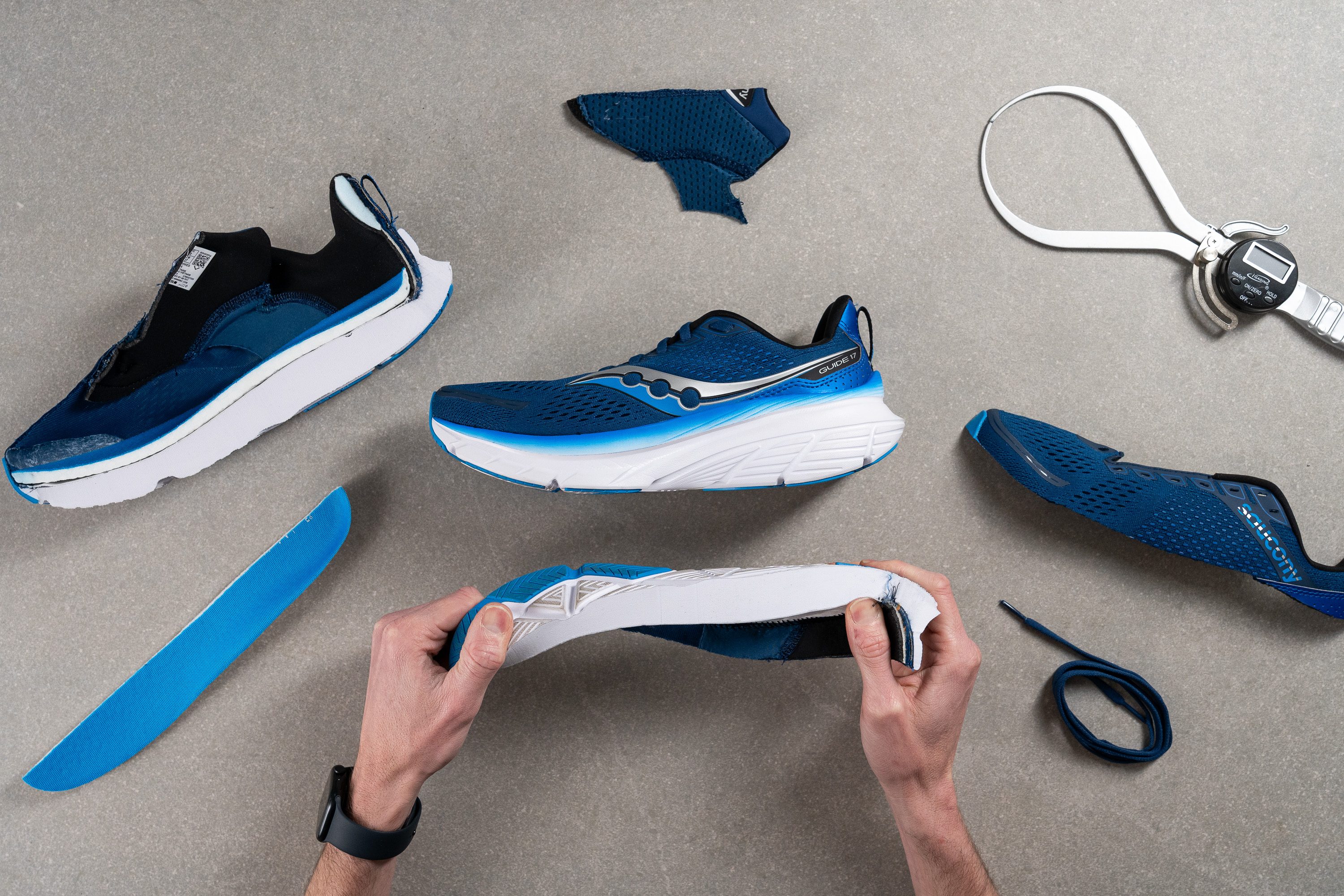
Cushioning
Shock absorption
The Guide 17 sports a thick-looking midsole that gives off a super-sized vibe, but that’s mainly due to its elevated sidewalls designed for a deep-sink, bathtub effect. That's how it keeps the foot securely centred throughout the run.
And that’s exactly why we recorded just average heel cushioning at 127 SA, despite the shoe’s chunky appearance. In contrast, the forefoot impressed us with a plush 122 SA, surpassing most competitors in front-loaded impact dampening.
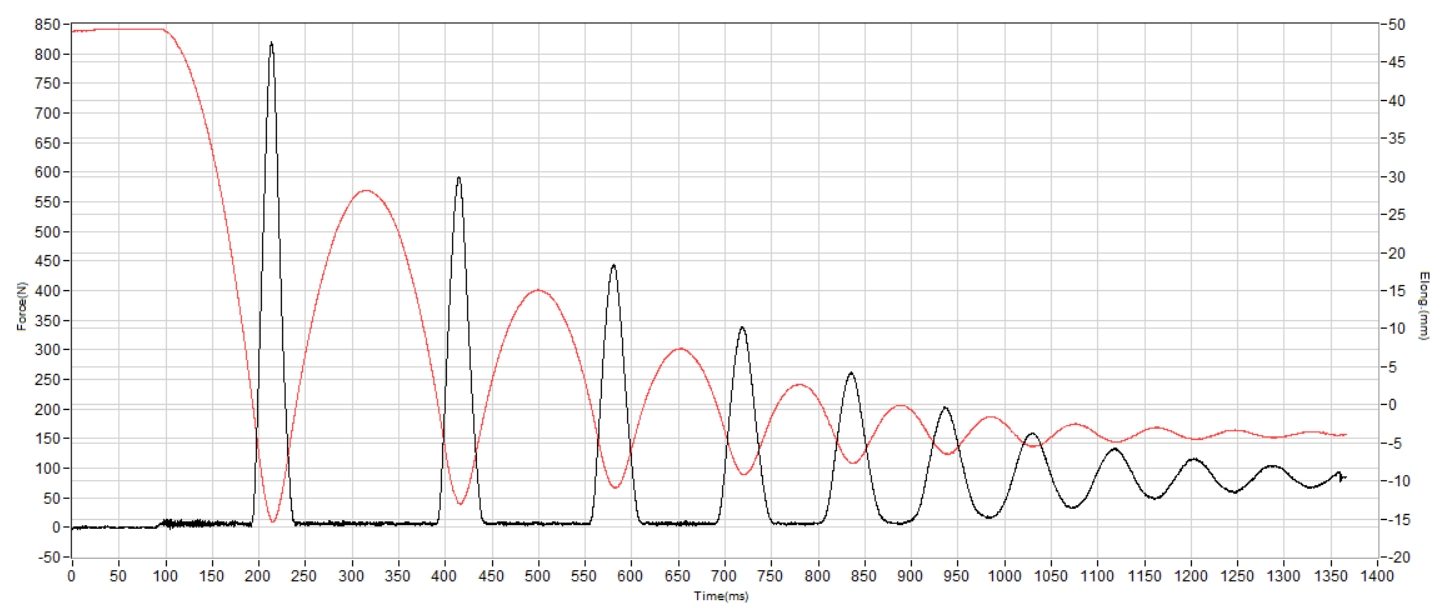
| Guide 17 | 127 SA |
| Average | 129 SA |
Energy return
Energy return lands right around the average: 59.4% in the heel and 63.5% in the forefoot.
While it doesn’t deliver an exhilarating, the Guide has never aimed to be a high-octane performer anyway.
| Guide 17 | 59.4% |
| Average | 58.5% |
Heel stack
We previously mentioned Saucony's increase in stack height, so let's delve into the specifics, as it significantly enhances the cushioning experience underfoot.
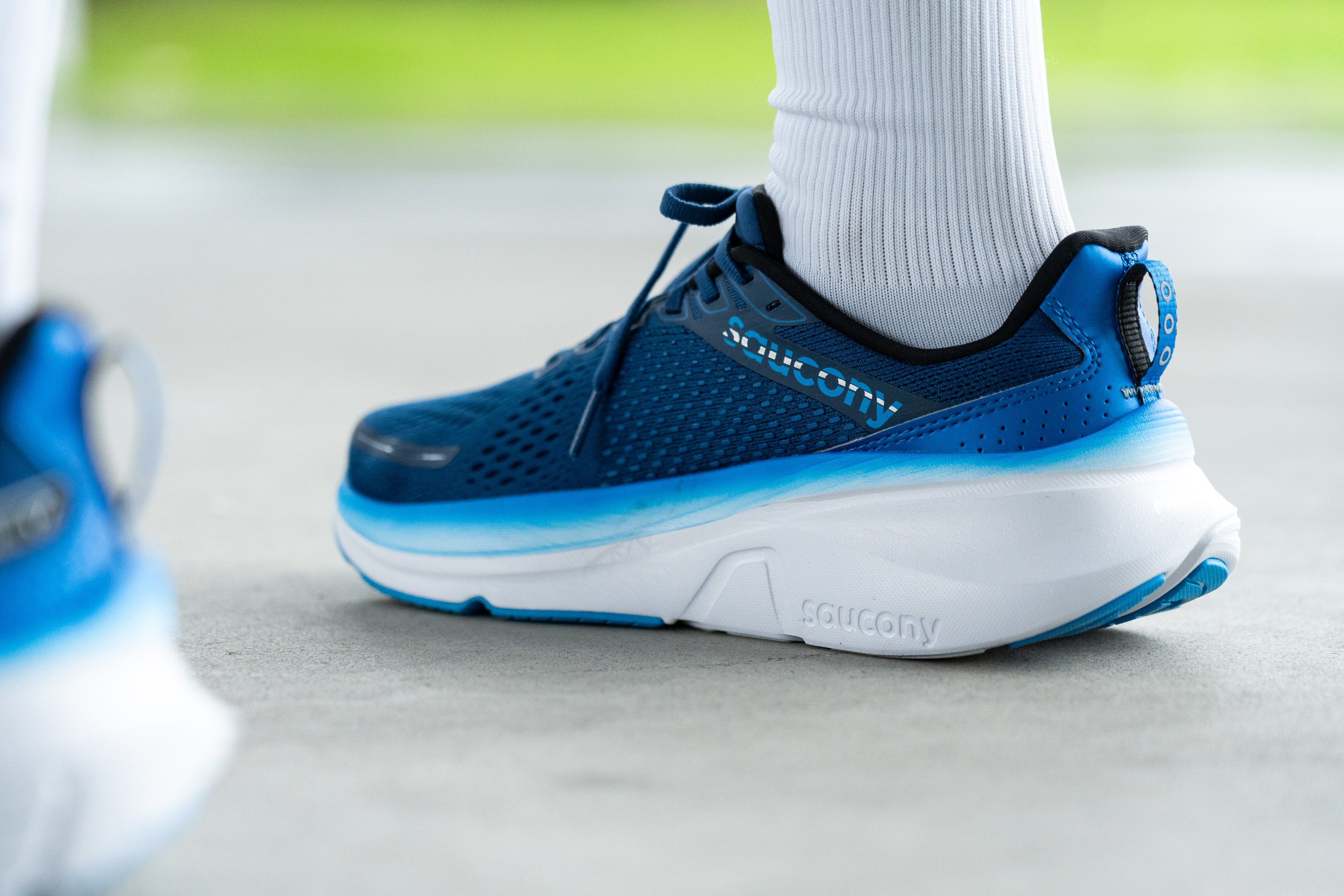
In our measurements, the heel boasts a towering 34.9 mm of cushioning, marking a noteworthy 2.3 mm increase from the prior version of the Guide. This enhancement is particularly beneficial for heel strikers, and it's impressive that this was achieved without any compromise to the shoe's weight.

| Guide 17 | 34.9 mm |
| Average | 34.8 mm |
Forefoot stack
In the front of the shoe there's also more PWRRUN cushioning working to protect your joints! Our measurements revealed a forefoot thickness of 27.9 mm, marking a significant 3.1 mm increase from the previous model.
This confirms that the Guide 17 isn't just more cushioned for those who strike with their rearfoot but enhances the ride for all types of runners.
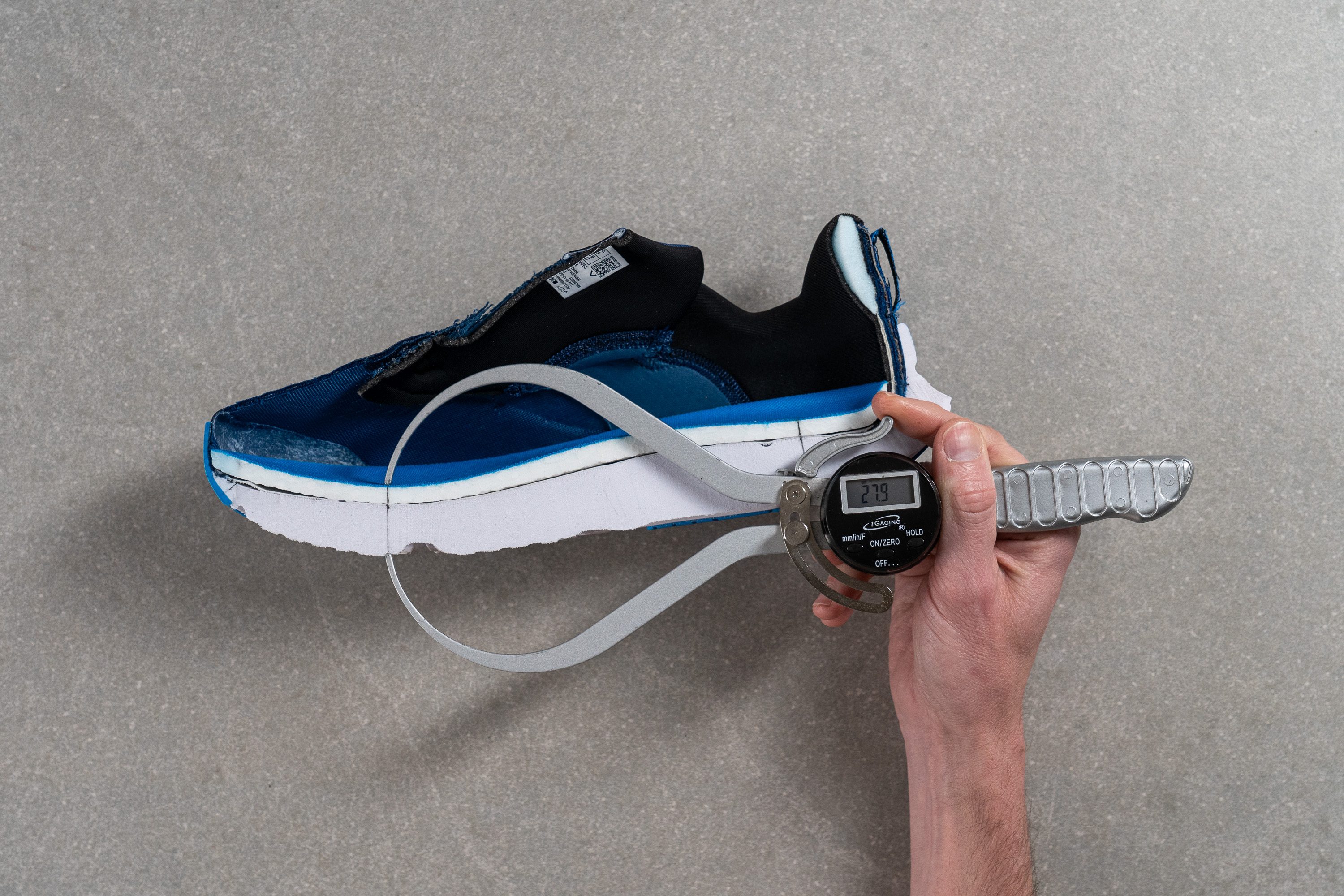
| Guide 17 | 27.9 mm |
| Average | 26.2 mm |
Drop
Our calliper measurements reveal a 7-mm heel-to-toe drop, a slight deviation from the official 6 mm. This minor difference is so subtle that it's essentially undetectable.
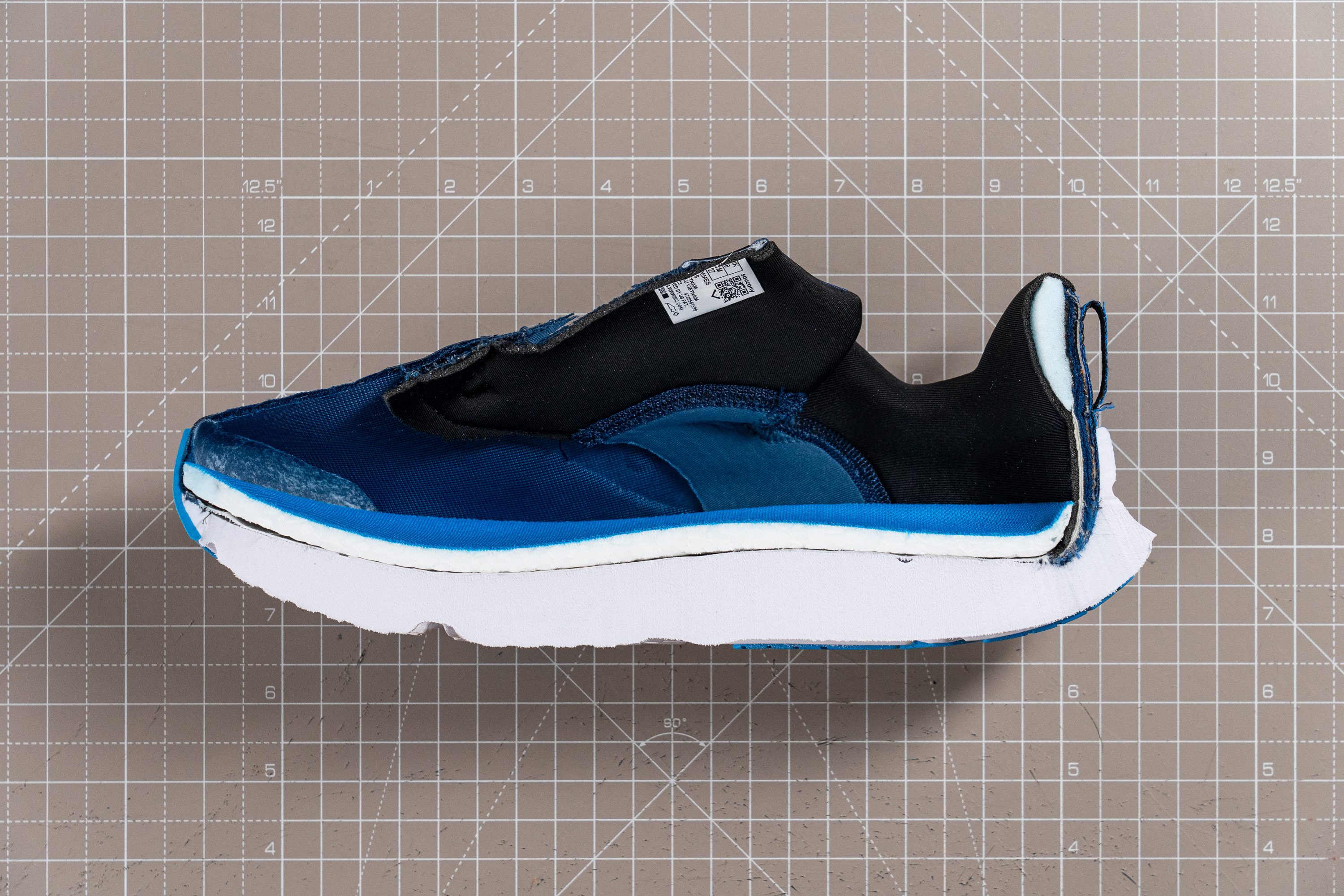
| Guide 17 | 7.0 mm |
| Average | 8.6 mm |
Midsole softness
As we discovered just before, Saucony has impressively managed to incorporate more of the reliable PWRRUN foam underfoot. While we were holding out for the introduction of PWRRUN+ for that extra bit of bounce and energy return, it seems that enhancement might be on hold until the next iteration.
Nevertheless, the current PWRRUN foam does a good job offering reliability, durability, respectable energy return, and ample stability.

Our tests show it registering at 22.3 HA on the durometer, striking a balance that steers away from plush midsoles, which aren't typically desired in a stability shoe. Still, we can't help but yearn for that PWRRUN+ upgrade!
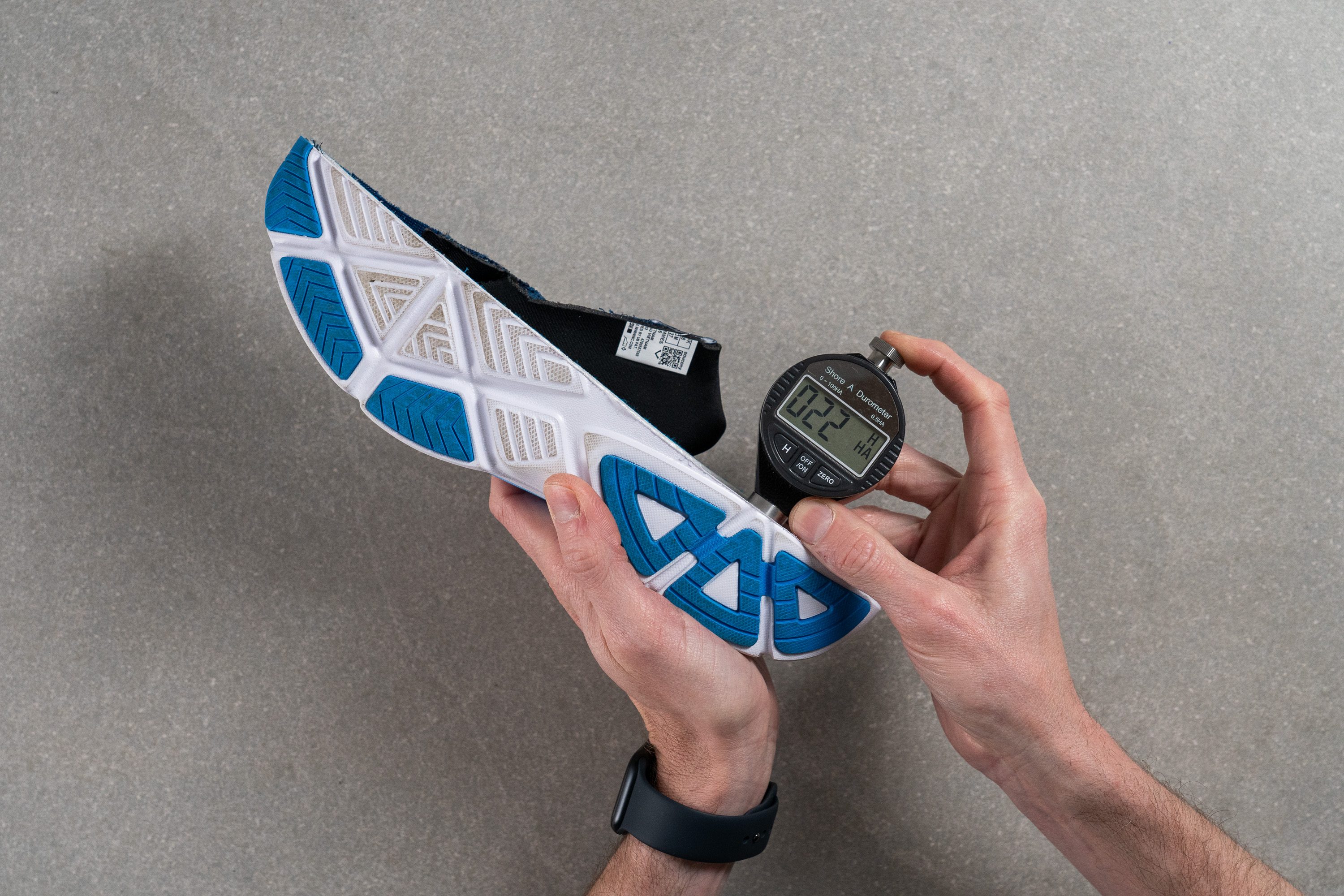
| Guide 17 | 22.3 HA |
| Average | 20.4 HA |
Rocker
Until the latest version, the Saucony Guide series had barely any rocker—something that's changed dramatically with the v17. In our tests, we noticed a very evident rocker at both the heel and toe.
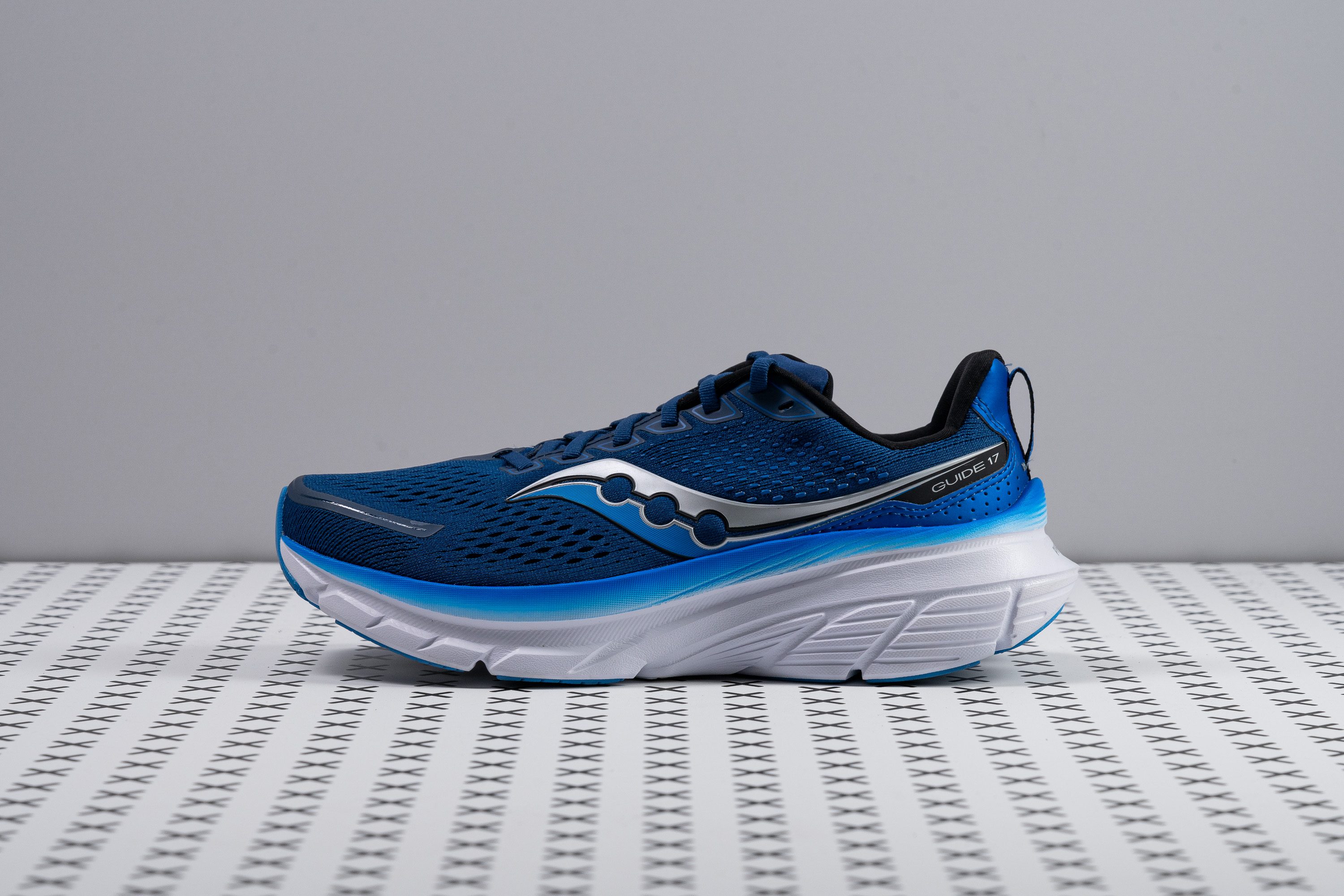
While this might come as a surprise or even be undesired to some, we believe it enhances the shoe's transitions and adds a layer of stability, making it a change we welcome with open arms. And for those who aren't fans of rockered shoes, the market still offers excellent alternatives—such as the Brooks Adrenaline GTS 23.
Size and fit
Size
Saucony Guide 17 fits true to size (62 votes).
Width / Fit
The midsole dimensions of the Guide 17 have enabled Saucony to design a roomy shoe, enhancing stability without compromising on comfort.
This approach is a game-changer for those with wider feet who really love Saucony. With the widest point now measuring 97.8 mm, this iteration is more accommodating than ever, setting a new standard for roominess in the Guide series.
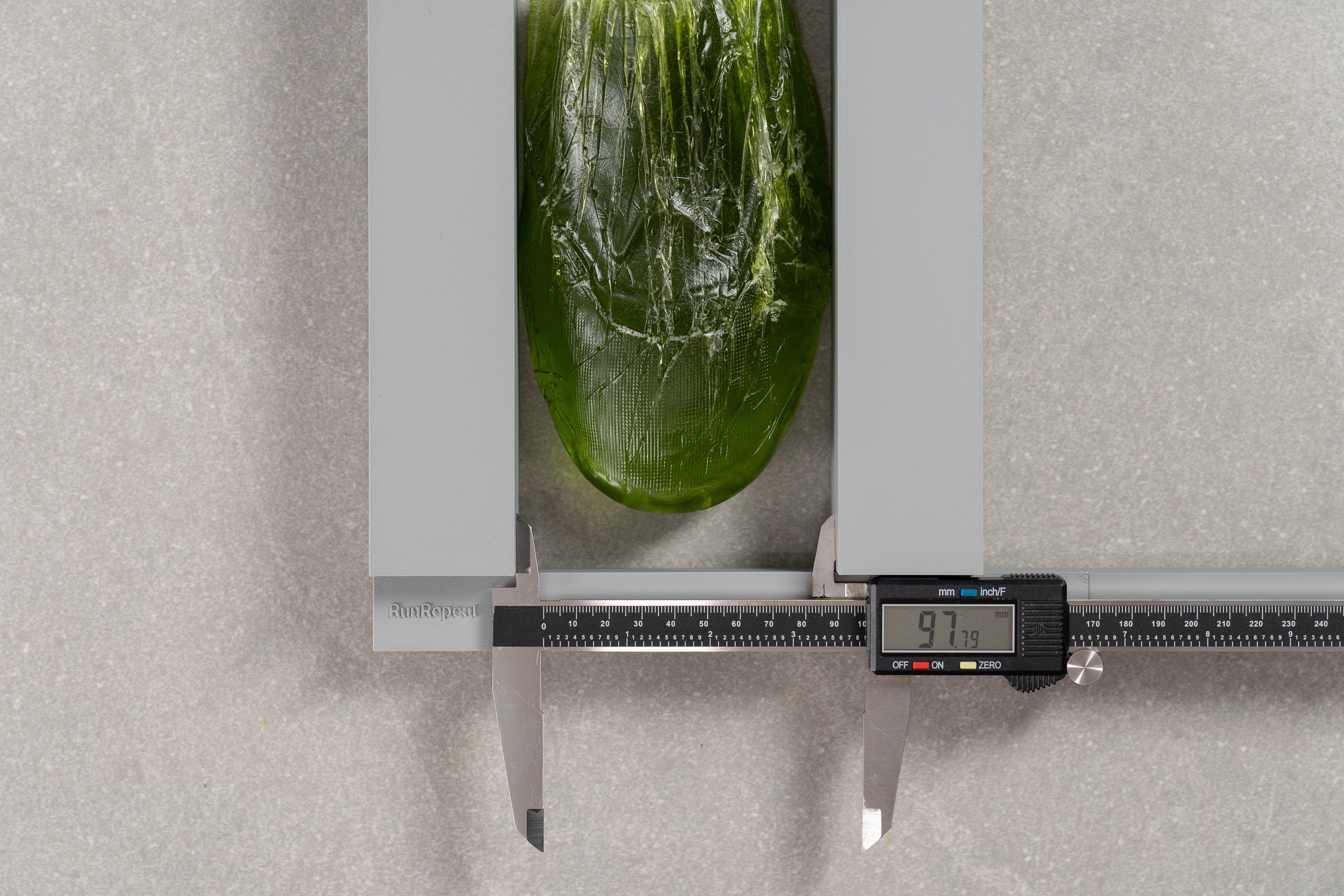
| Guide 17 | 97.8 mm |
| Average | 95.1 mm |
Toebox width
On the flip side, the toebox features Saucony’s usual tapered design, which, in our opinion, may not work well for runners with wider toe regions.

After doing another measurement, we discovered a result of 73.7 mm—around average but not aligned with the wider trend seen in the previous reading.
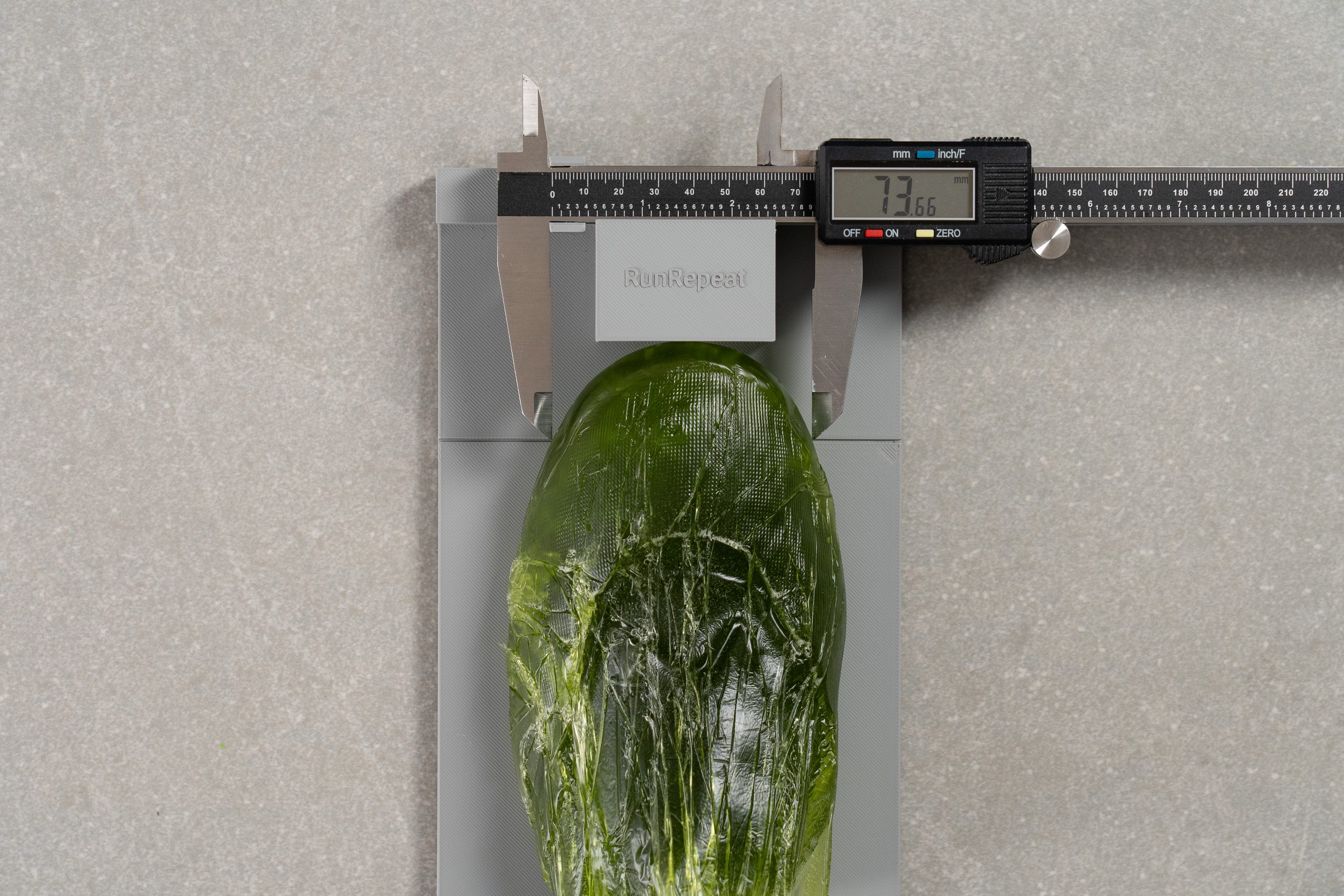
| Guide 17 | 73.7 mm |
| Average | 73.2 mm |
Toebox height
The front of the shoe offers generous toe height at 29.3 mm—something we truly appreciated and found beneficial for both running and casual wear.
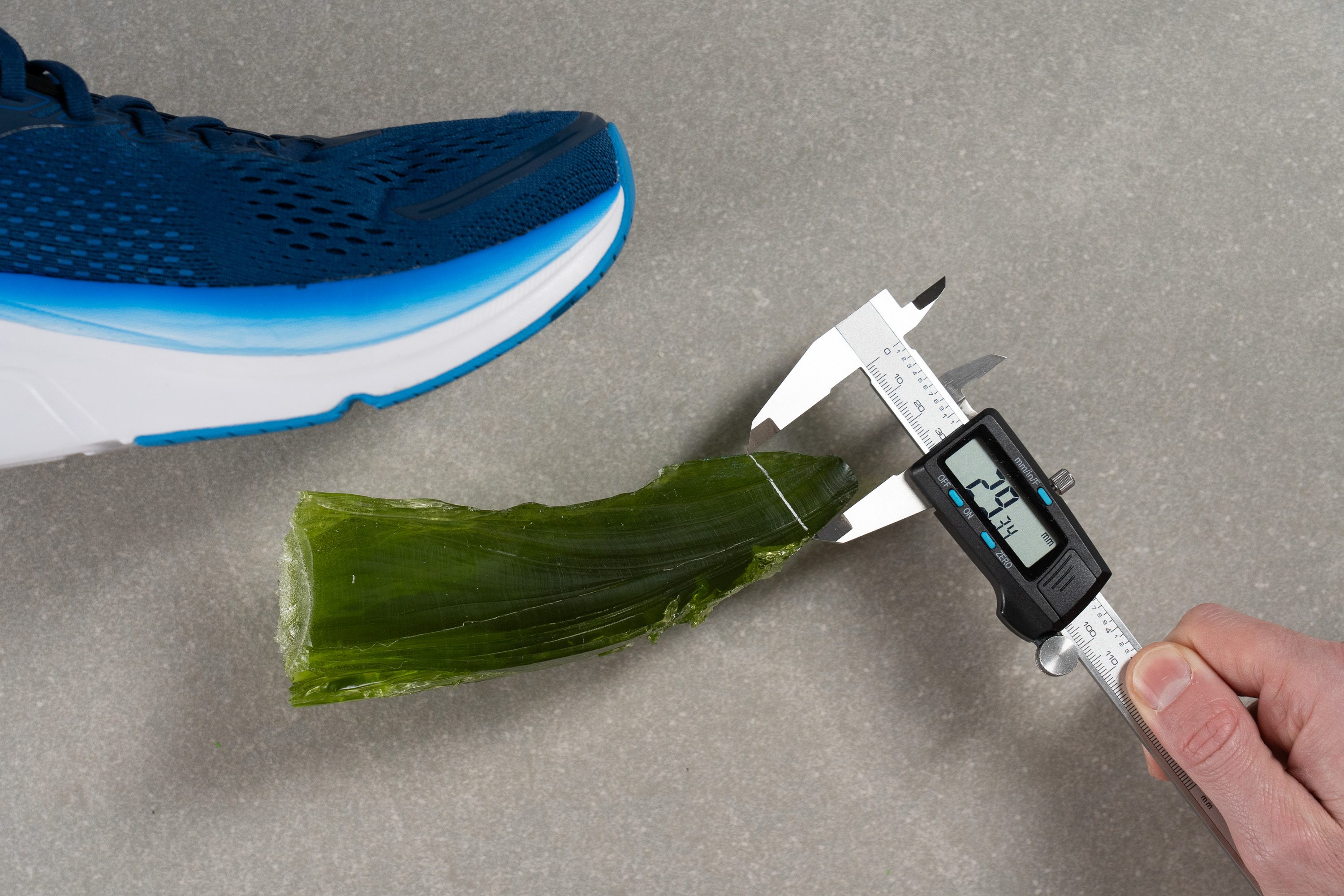
| Guide 17 | 29.3 mm |
| Average | 27.1 mm |
Traction / Grip
Traction test
We tested the Saucony Guide 17 in wet conditions using our custom setup and recorded a 0.44 score. It’s not a chart-topping number, but still enough to deliver secure footing on soaked asphalt, dusty park loops, or clean pavement.
| Guide 17 | 0.44 |
| Average | 0.48 |
Outsole design
It’s nice to see Saucony’s signature branding stamped on the outsole—otherwise, at first glance, it could easily be mistaken for a Hoka.
We believe Saucony aimed to strike a balance between grip and durability here. With so little rubber coverage across the outsole, they likely chose a tougher, long-lasting compound—one that definitely extends lifespan.

Flexibility / Stiffness
The smart rubber reduction and deep outsole grooves work together to boost flexibility. In our 30-degree bend test, we measured just 10.0N—an impressive result that stands out for a shoe of this size and design.
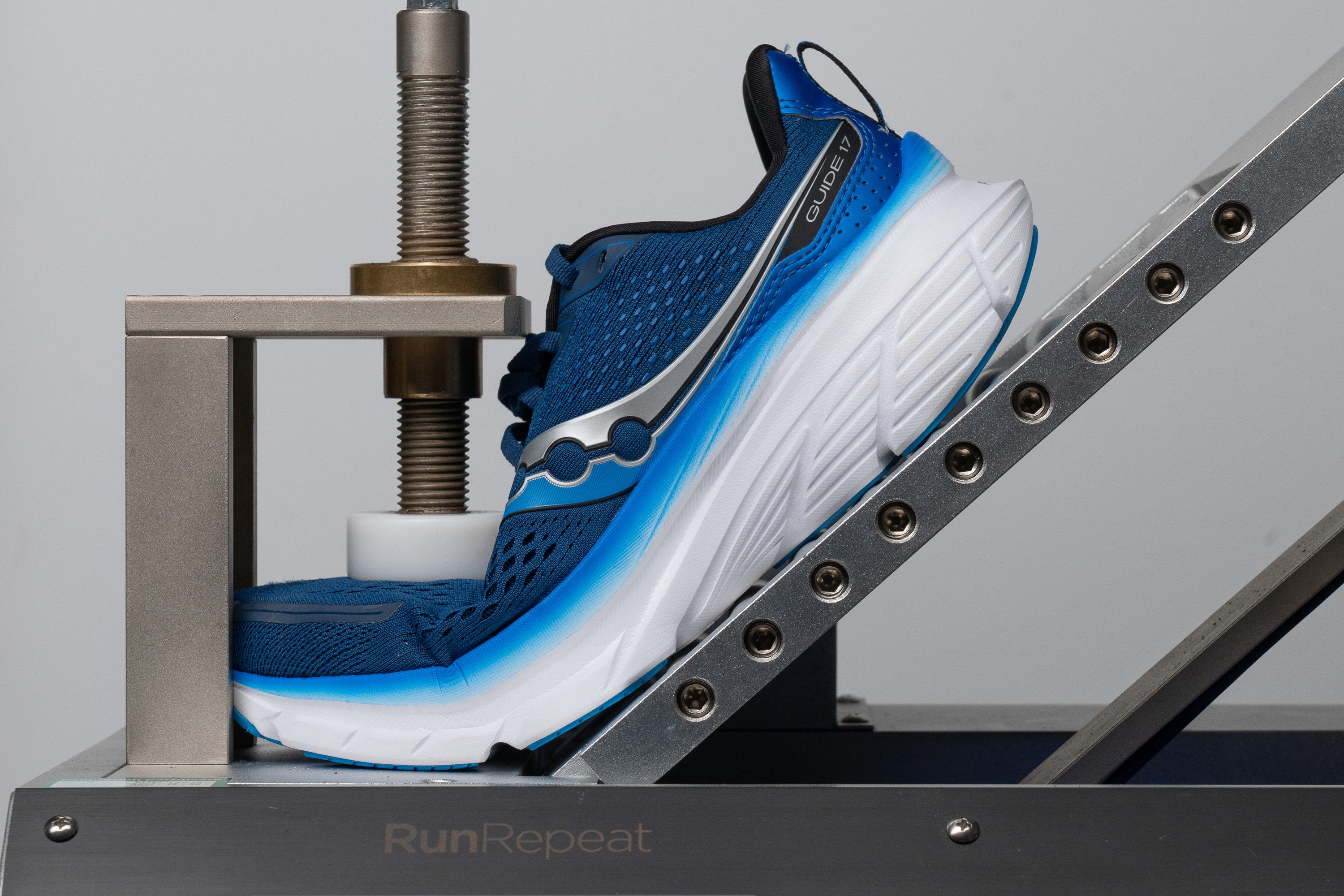
| Guide 17 | 10.0N |
| Average | 15.3N |
Stiffness in cold (%)
Despite the presence of some EVA in the PWRRUN foam, our tests revealed only a modest increase in stiffness by 15.5% during our 90-degree bend test under chilly conditions. Fantastic!
| Guide 17 | 16% |
| Average | 33% |
Weight
Saucony has impressively managed to bulk up the stack height for enhanced cushioning in the Guide 17 without crossing the 10-oz mark, maintaining it at only 9.7 oz or 275g.
This achievement mirrors the weight of its predecessor, yet offers significantly more foam underfoot.
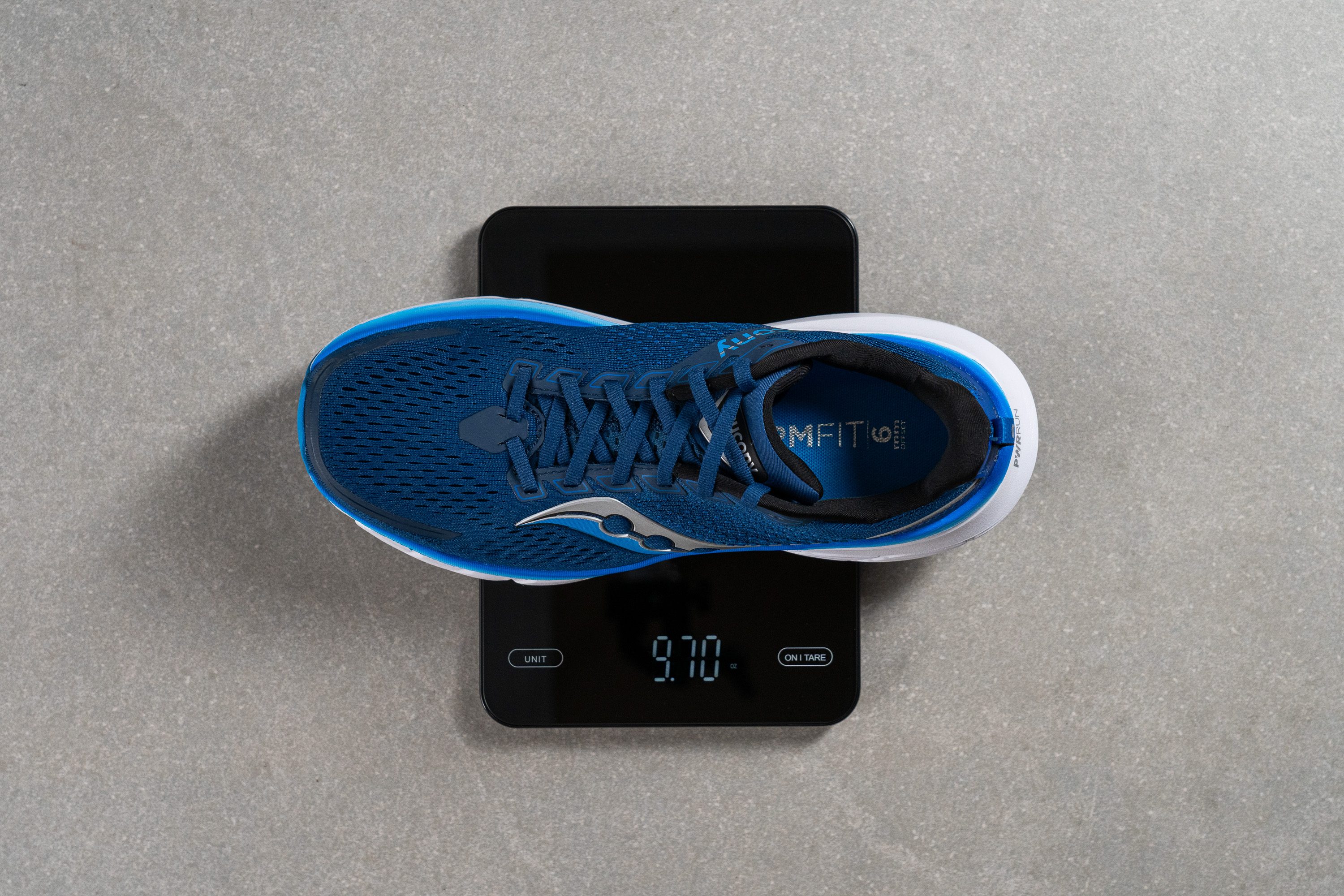
| Guide 17 | 9.7 oz (275g) |
| Average | 9.3 oz (264g) |
Breathability
Despite the ample ventilation holes in the Saucony Guide 17, our smoke test revealed that airflow didn't meet our expectations. It scored a modest 3/5 in our evaluation, indicating that while the shoe is competent for most climates, it might not be ideal on extremely hot days.
This outcome was somewhat unexpected, particularly because the light test suggested excellent breathability. This highlights the value of conducting various tests to accurately gauge a shoe's ventilation capabilities—not relying solely on one method.
During the light test, we noted that ventilation is concentrated in the forefoot, tapering off towards the medial side. This design choice is strategic for a stability shoe, enhancing support where it's most crucial.
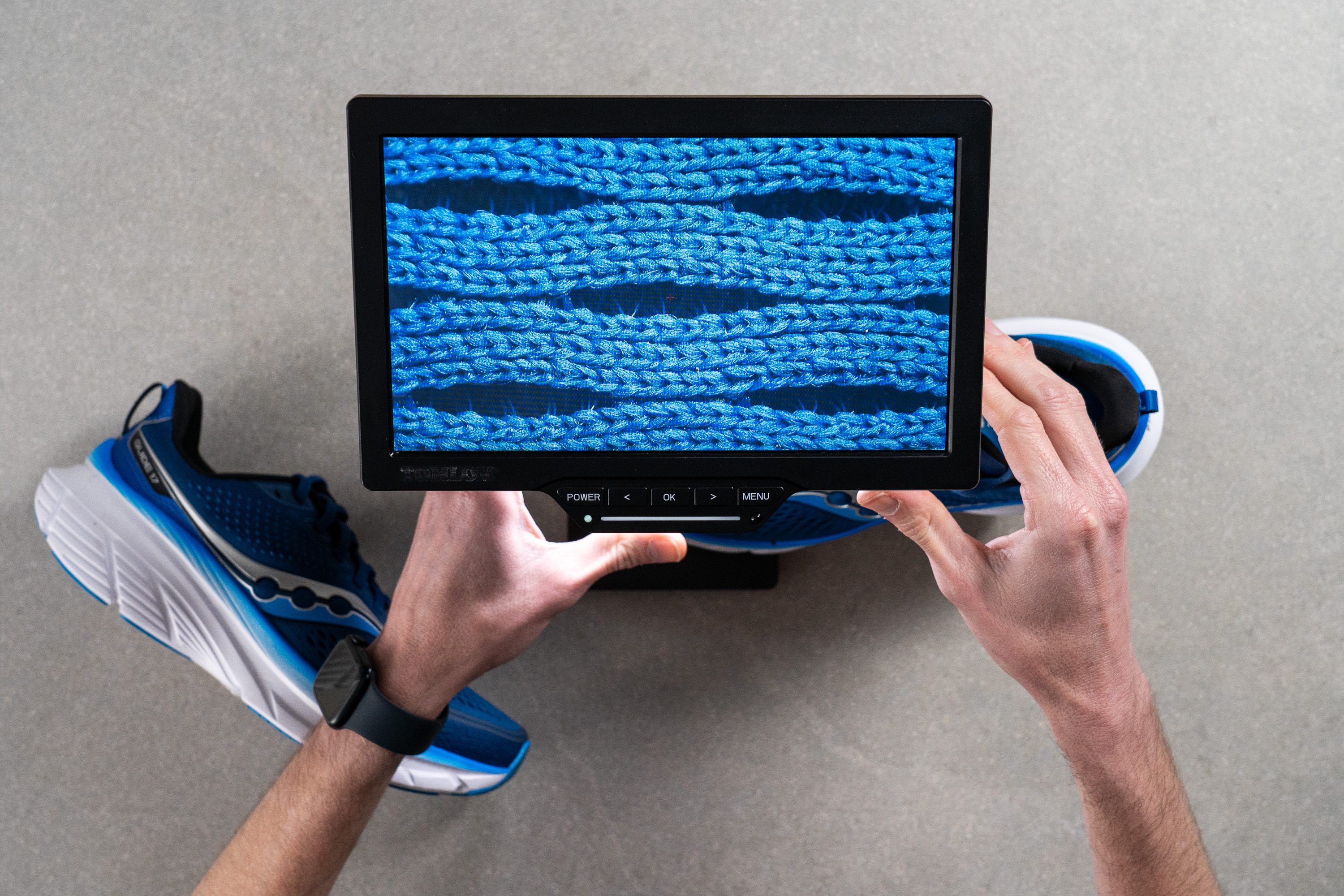
Closer inspection with the microscope revealed a typical engineered mesh upper, consisting of a primary breathable layer and a secondary layer beneath that adds structure and comfort but somewhat restricts airflow.
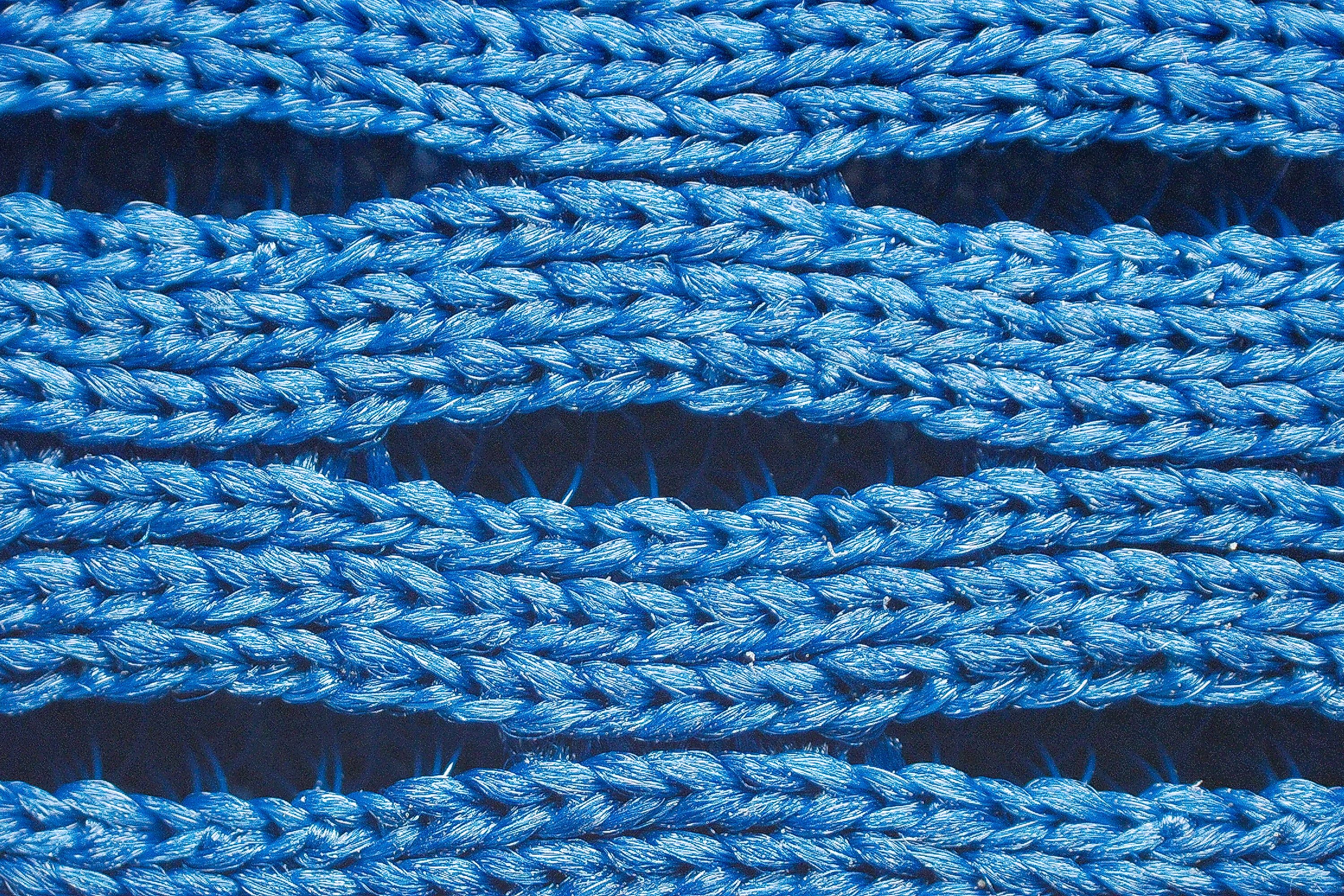
The upper's toebox area is notably stretchy, adding to the shoe's comfort, and the heel is exceptionally well-padded.
The rest of the upper offers standard comfort levels, striking a deliberate balance between weight and plushness.
| Guide 17 | 3 |
| Average | 3.7 |
Stability
Lateral stability test
Stability is the cornerstone of the Saucony Guide 17—everything else takes a back seat. We're pleased to report the shoe excels in its primary mission.
Marketed as a moderate stability shoe, it caters to the vast majority of runners without resorting to traditional methods like medial posts. Saucony has finally embraced new stability techniques such as enhanced midsole walls, sole flares, and a rockered shape, aligning with the latest industry trends for a more natural stability solution.
Torsional rigidity
The Guide series has always stood out for its remarkable flexibility, even among stability shoes.
However, moving away from more obtrusive stability features like medial posts has led to a slight increase in torsional rigidity. Where the previous Guide scored a 2 out of 5 in flexibility, the latest iteration has moved to a 3 out of 5. Yet, it remains somewhat flexible!
| Guide 17 | 3 |
| Average | 3.5 |
Heel counter stiffness
The heel counter in the Saucony Guide 17 boasts a robust stiffness, scoring a solid 4 out of 5 in our evaluations. While there's potential for Saucony to ramp up the rigidity in future iterations for even greater stability, we believe the current level strikes a perfect balance.
This moderate stiffness ensures a harmonious blend of comfort and support, setting a benchmark in moderate stability footwear. Our hope is that Saucony maintains this optimal stiffness, as it adeptly combines support with wearability.
| Guide 17 | 4 |
| Average | 2.9 |
Midsole width - forefoot
The most striking transformation in the Guide 17 is undoubtedly its broader midsole, a significant leap from its predecessor that's nothing short of astonishing and delivers a massive boost in terms of stability.
The forefoot width has expanded from 114.4 mm in the previous version to 121.0 mm in the latest, offering a more generous platform that enhances support, particularly benefiting those who strike with the midfoot or forefoot.
This change, while impressive, does mean the shoe now feels more like a sedan, diverging slightly from the nimble agility typically associated with a daily trainer.
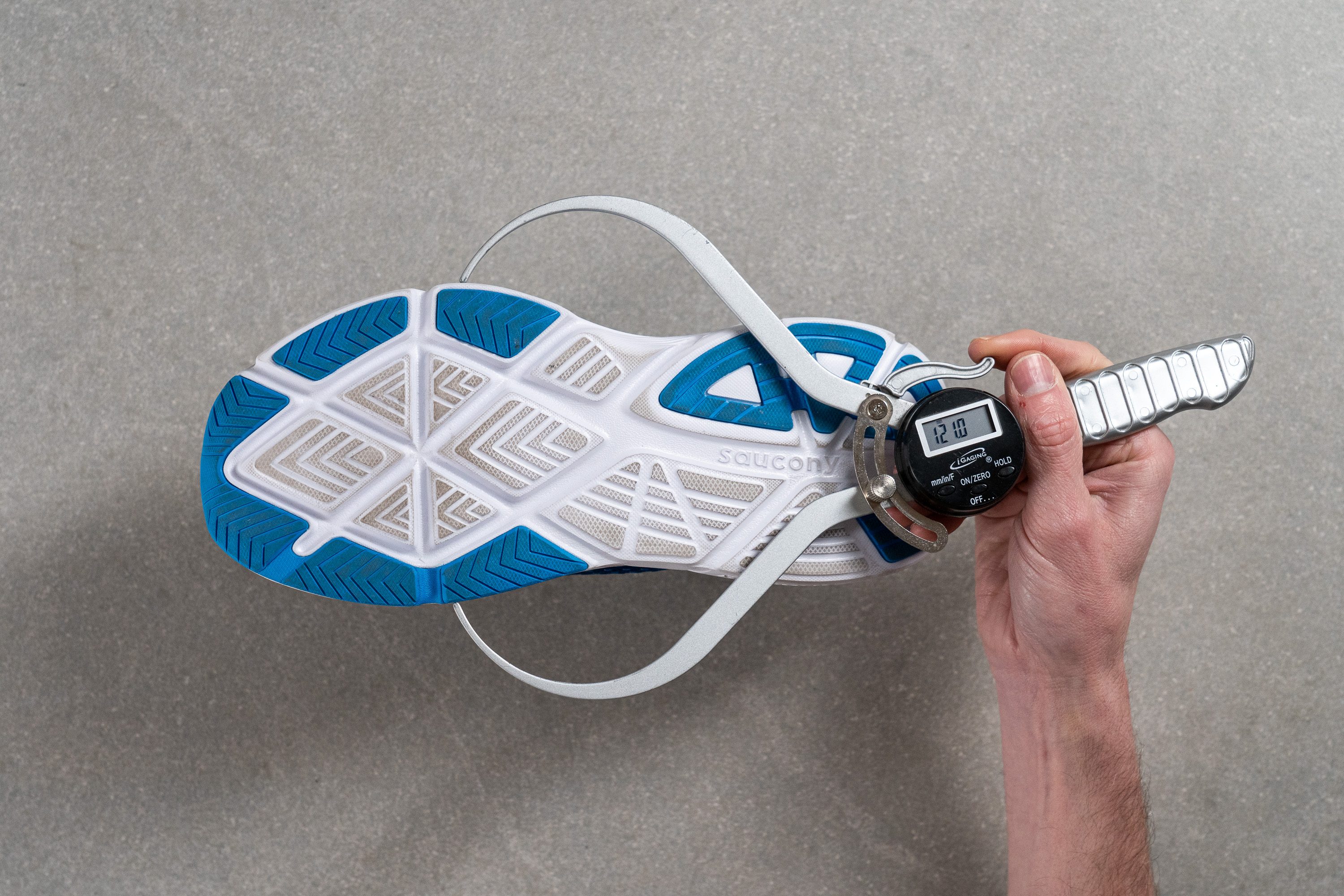
| Guide 17 | 121.0 mm |
| Average | 114.4 mm |
Midsole width - heel
The transformation in the heel width is even more staggering than the forefoot, escalating from 85.8 mm to an astonishing 104.6 mm. This 22% increase is among the most dramatic changes we've encountered in any update.
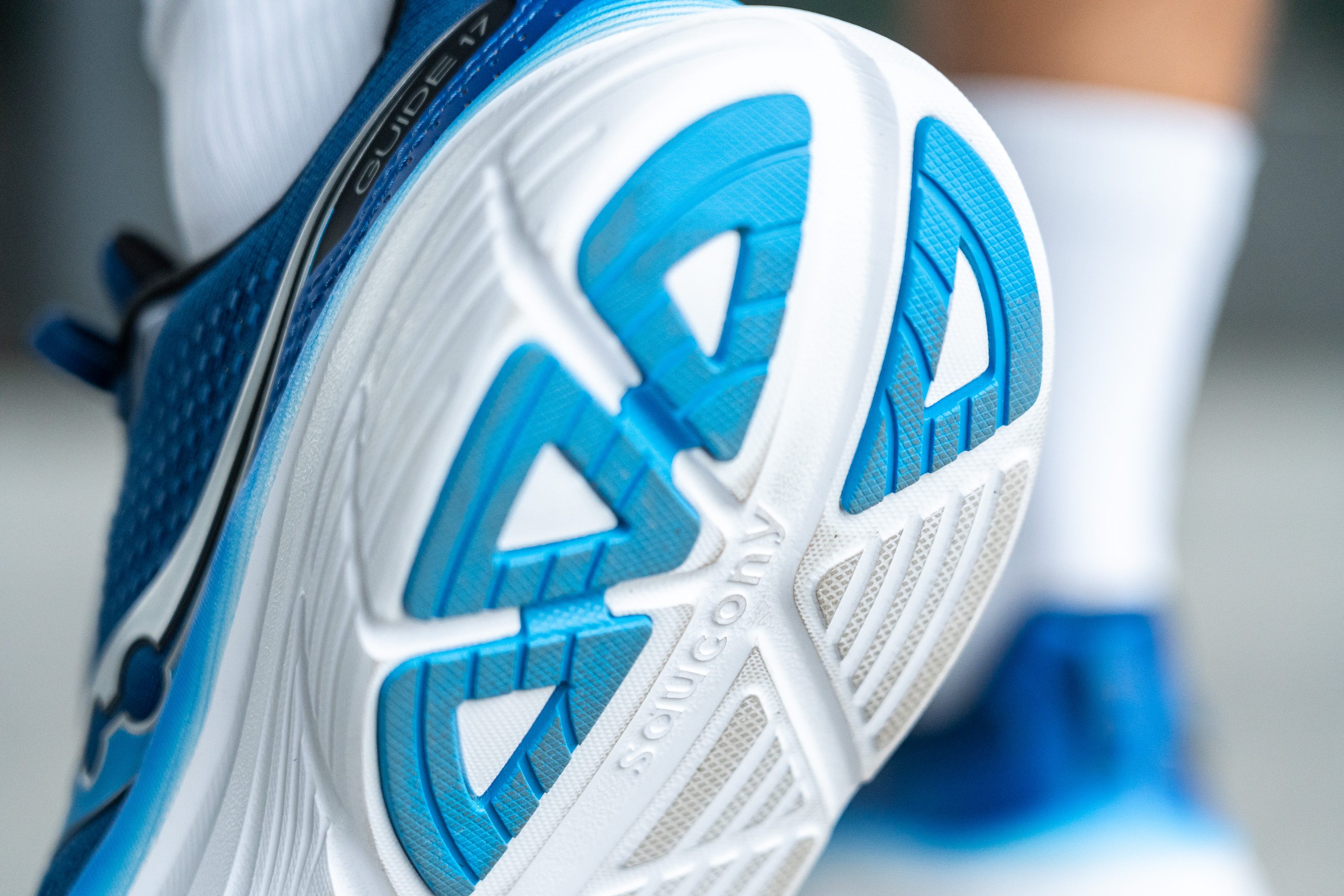
This wider heel is a game-changer for stability, particularly benefiting rearfoot strikers, albeit at the expense of a slightly less natural running sensation. Nonetheless, we recognise this as a necessary adaptation to imbue the Guide series with the requisite stability sans conventional support mechanisms. It seems this trend may set the standard for future stability running shoes unless a novel innovation emerges.
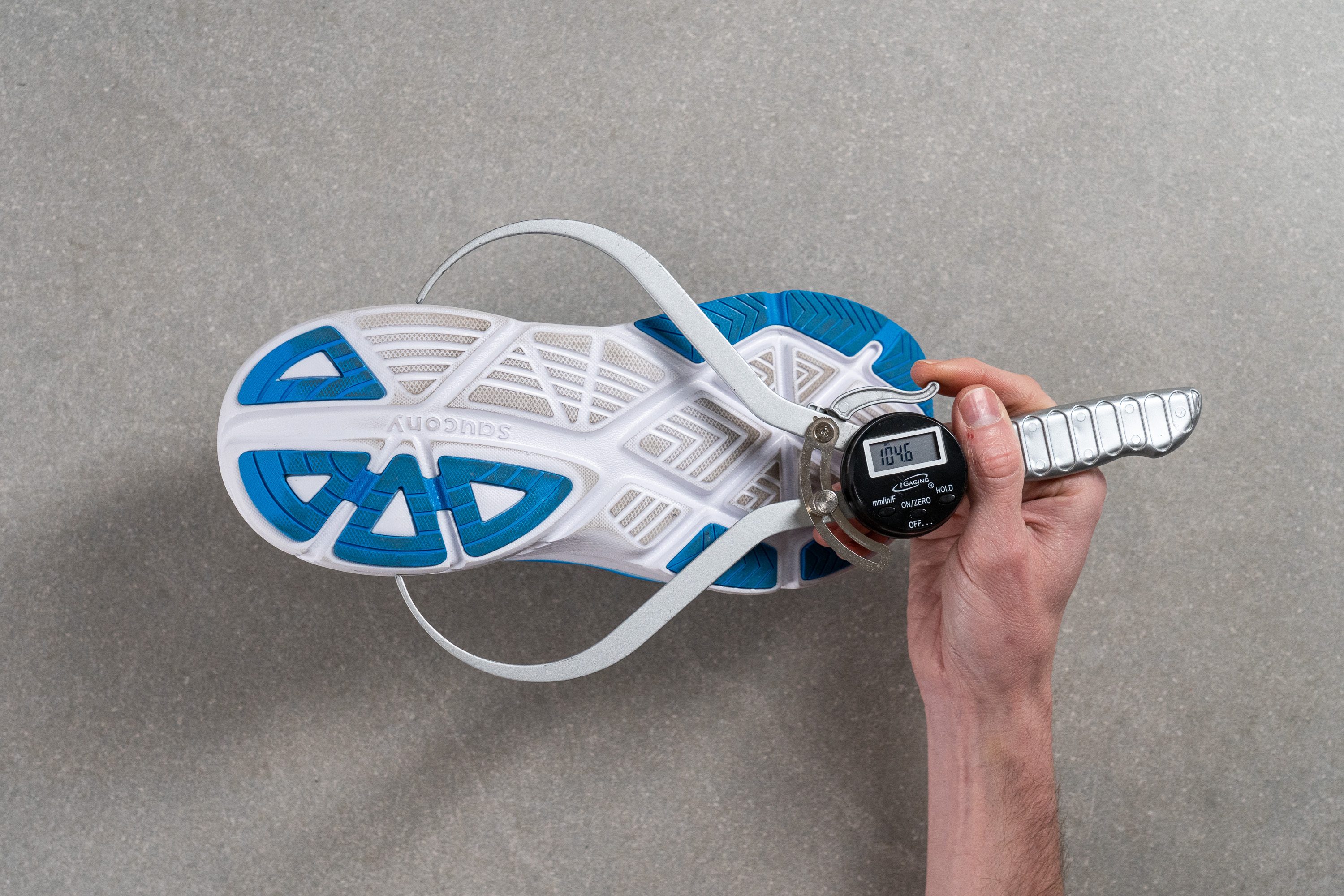
| Guide 17 | 104.6 mm |
| Average | 90.7 mm |
Durability
Toebox durability
As we proved before, the engineered mesh incorporates numerous ventilation gaps for enhanced breathability, which initially raised concerns about its durability here in the lab, as such openings can often become points of weakness in the upper's structure.
Nonetheless, Saucony's mesh design, while unremarkable on its own, consists of multiple layers. This layered approach ensures that when the outermost, softer layer is compromised during our Dremel testing, a secondary layer remains to prevent extensive damage, leading us to award a 3/5 durability score in our lab evaluation.
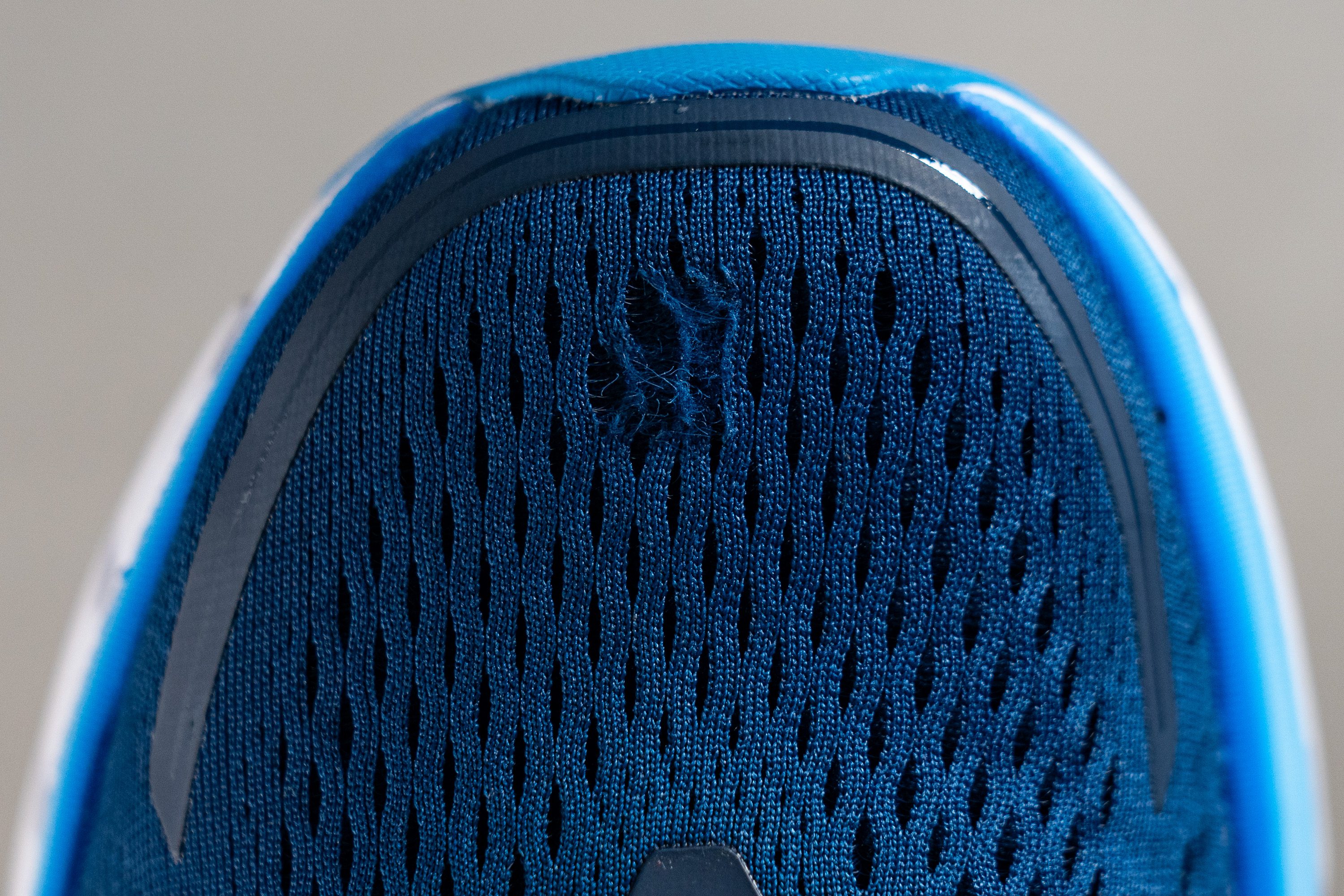
| Guide 17 | 3 |
| Average | 2.6 |
Heel padding durability
The heel of the Guide 17 not only offers luxurious, comfortable padding but is also wrapped in a fabric that exudes durability. Eager to see its resilience, we put it through our rigorous Dremel test.
To our delight, it performed exceptionally well, securing a perfect 5/5 score from our team. With such outstanding durability, we're confident in asserting that the Guide 17 will withstand premature wear in the heel area, even for runners who typically experience durability issues here.

| Guide 17 | 5 |
| Average | 3.4 |
Outsole hardness
The Guide 16's outsole was too hard at 92.0 HC, leading to subpar grip. Saucony made some changes in the Guide 17 with a softer rubber at 88.8 HC, but in our experience, traction still falls short.

Seems clear to us that Saucony had to balance between durability and grip due to the large amount of rubber used in the outsole. They opted for a tougher rubber to increase lifespan, sacrificing grip in the process. That's it.

| Guide 17 | 88.8 HC |
| Average | 79.2 HC |
Outsole durability
The compromise paid off! Unlike the lacklustre performance of some harder rubbers in our durability tests, the Guide 17 excelled impressively.
After halting the Dremel and taking new measurements, we observed a mere 0.6-mm wear—indicative of remarkable longevity.
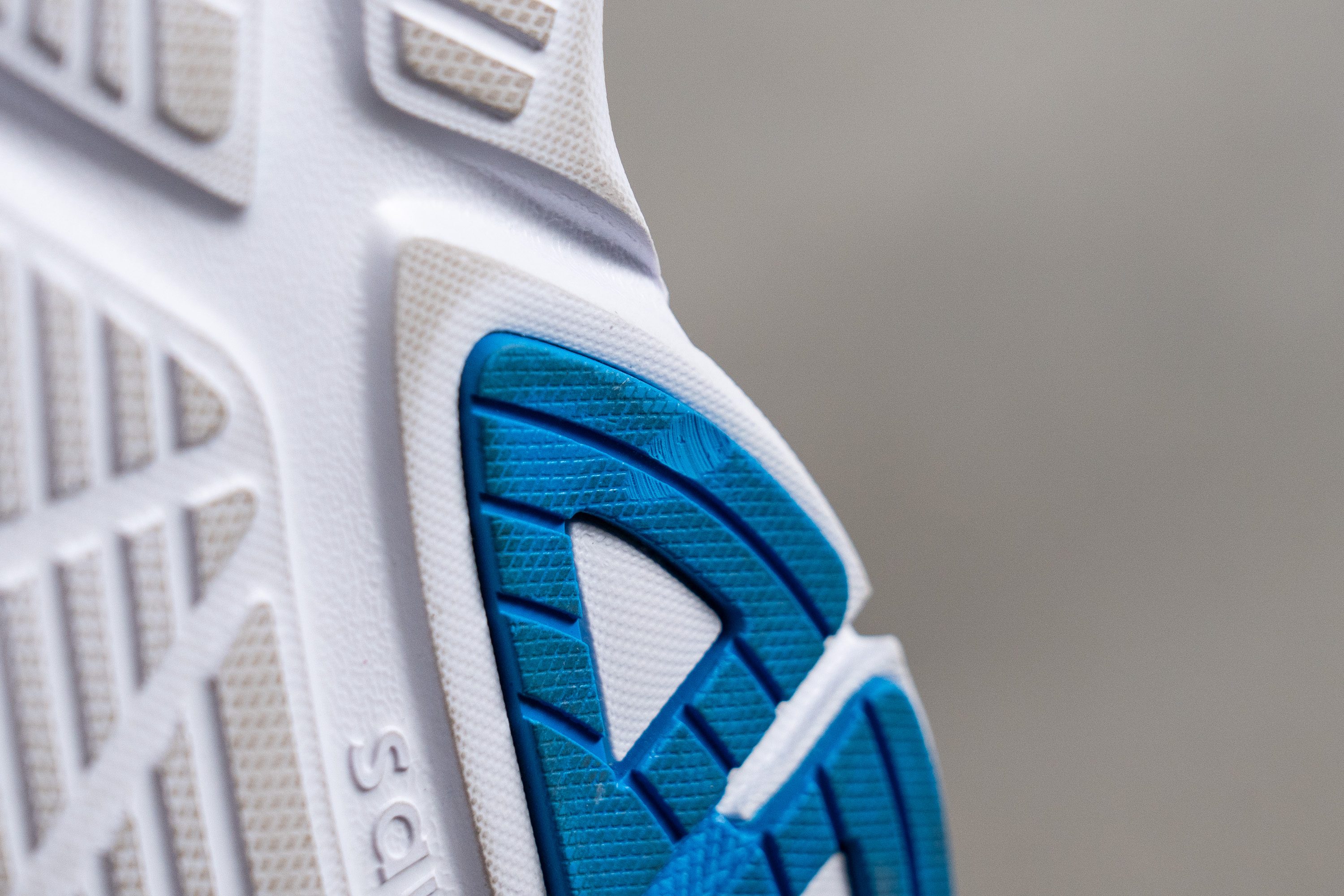
| Guide 17 | 0.6 mm |
| Average | 1.1 mm |
Outsole thickness
With the rubber thickness at a solid 3.0 mm, we're confident that even heel strikers with significant pronation won't encounter rubber major wear issues.
However, the concern lies with the exposed foam areas not protected by the outsole—prompting us to recommend this shoe only for road running or treadmills. Caution is really advised against venturing onto rougher terrains like gravel roads.

| Guide 17 | 3.0 mm |
| Average | 3.2 mm |
Misc
Insole thickness
The Saucony Guide 17's insole stands out as one of the plushest we've encountered in our evaluations. Its remarkable 6.7 mm thickness pairs with the premium PWRRUN+ cushioning, surpassing even the quality found in the shoe's midsole (PWRRUN).
This combination delivers an exceptionally soft and supportive underfoot experience while running and walking.

| Guide 17 | 6.7 mm |
| Average | 4.5 mm |
Removable insole
The PWRRUN+ sockliner is removable since it's not glued down, offering versatility in customization. Yet, we'd suggest keeping it in place—it's truly one of the highlights of this shoe!
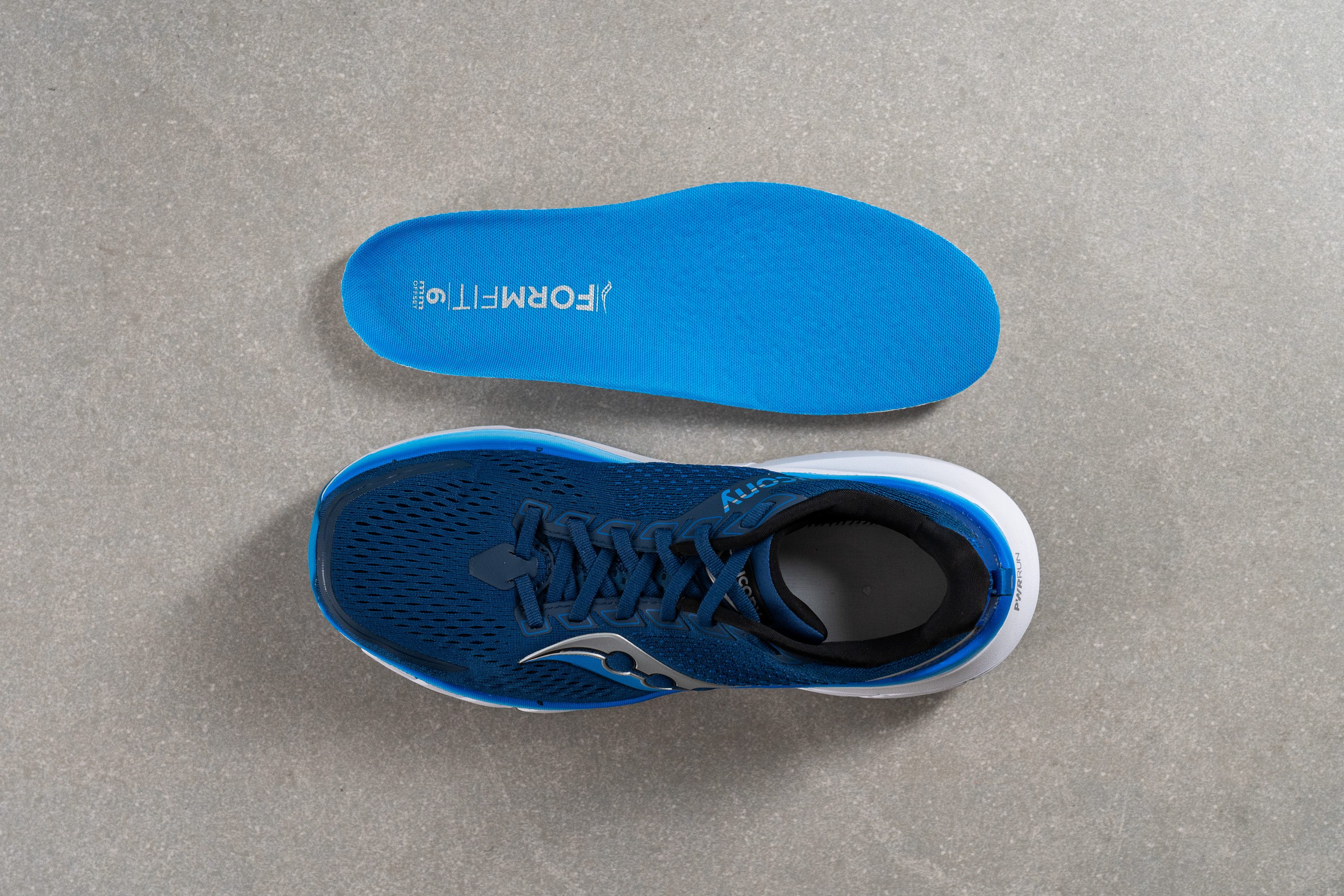
| Guide 17 | Yes |
Midsole softness in cold (%)
PWRRUN combines EVA and TPU, creating an interesting blend for this cold temperature test. EVA tends to harden significantly in the cold, whereas TPU maintains a consistent feel.
Our experiment revealed a 24.2% increase after a 20-minute freezer session, a result we consider quite acceptable. Typically, TPU's performance change is less, and EVA alone can see a 30-40% increase under similar conditions, so this seems totally reasonable.
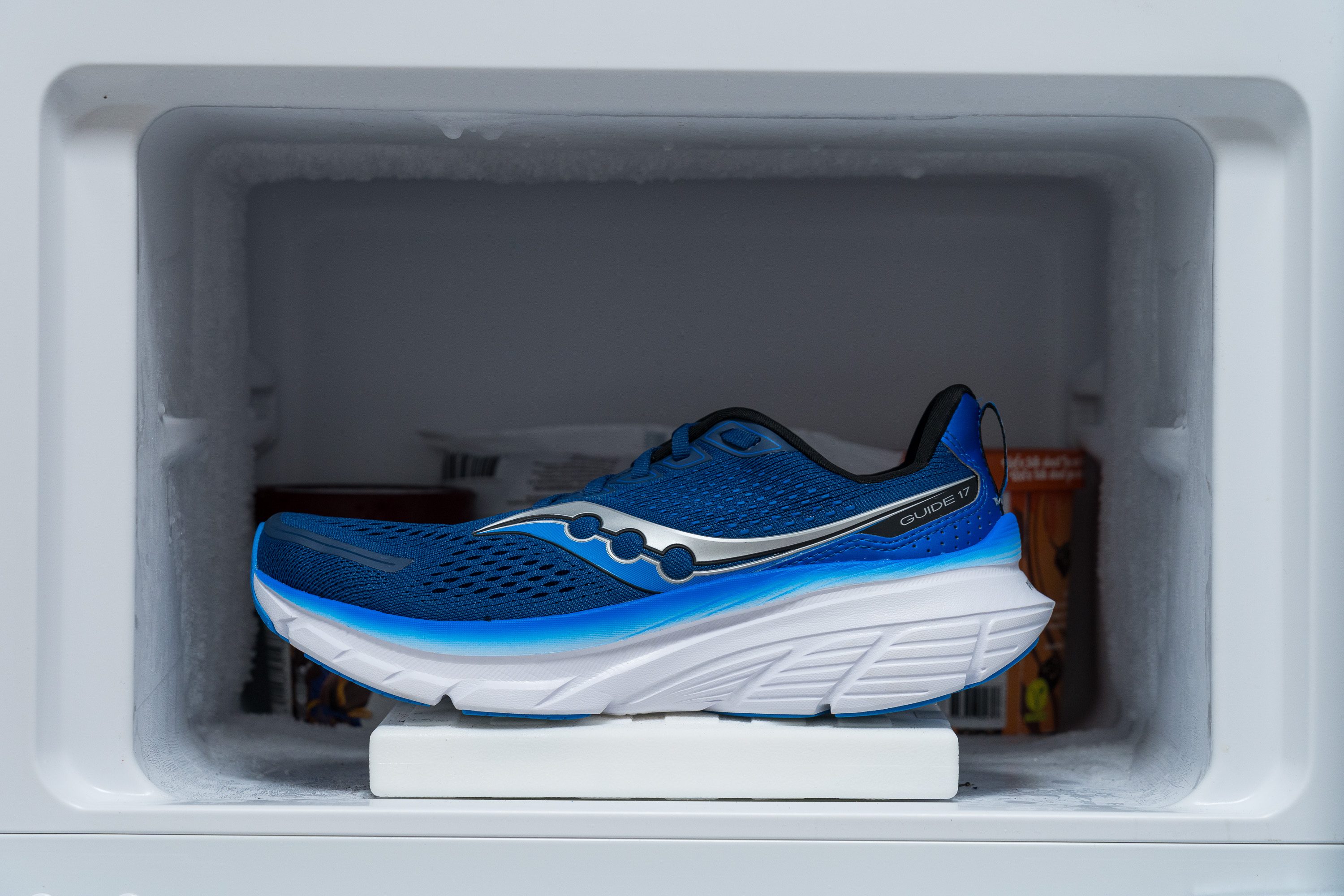
| Guide 17 | 24% |
| Average | 24% |
Reflective elements
We believe that reflective elements are a must-have for any daily trainer to ensure safety. Thankfully, Saucony has incorporated some into the Guide 17.
| Guide 17 | Yes |
Tongue padding
In a bid for a lighter build, Saucony has pared down the tongue thickness by 3.7 mm compared to the previous model. While the Guide 16 boasted a plush 7.7 mm cushioning, the Guide 17's tongue measures a slimmer 4.0 mm.
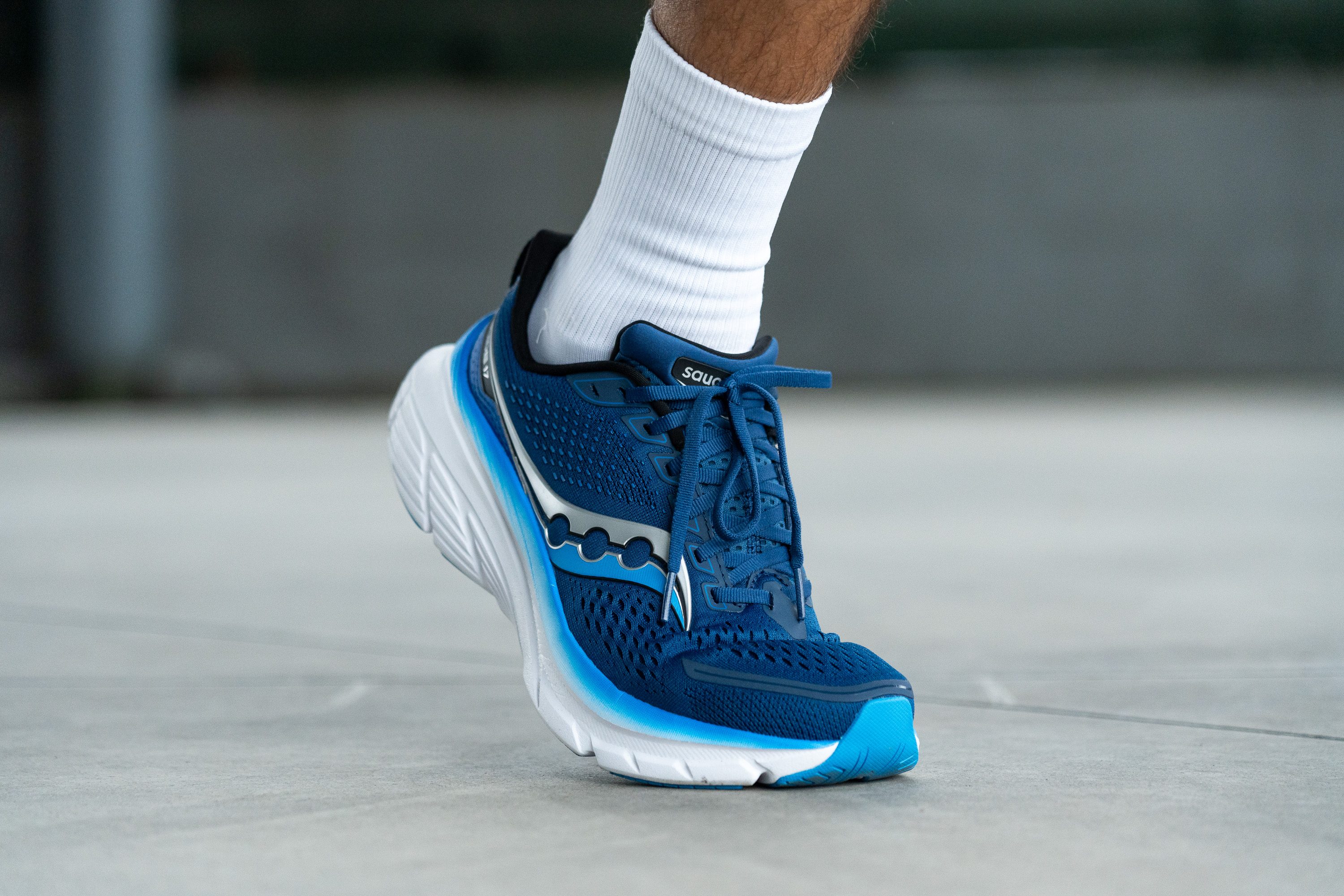
This reduction, we found, might leave something to be desired for a daily trainer. Most runners will find it sufficient, yet we believe an extra 1 or 2 mm could have struck a perfect balance between comfort and lightness.
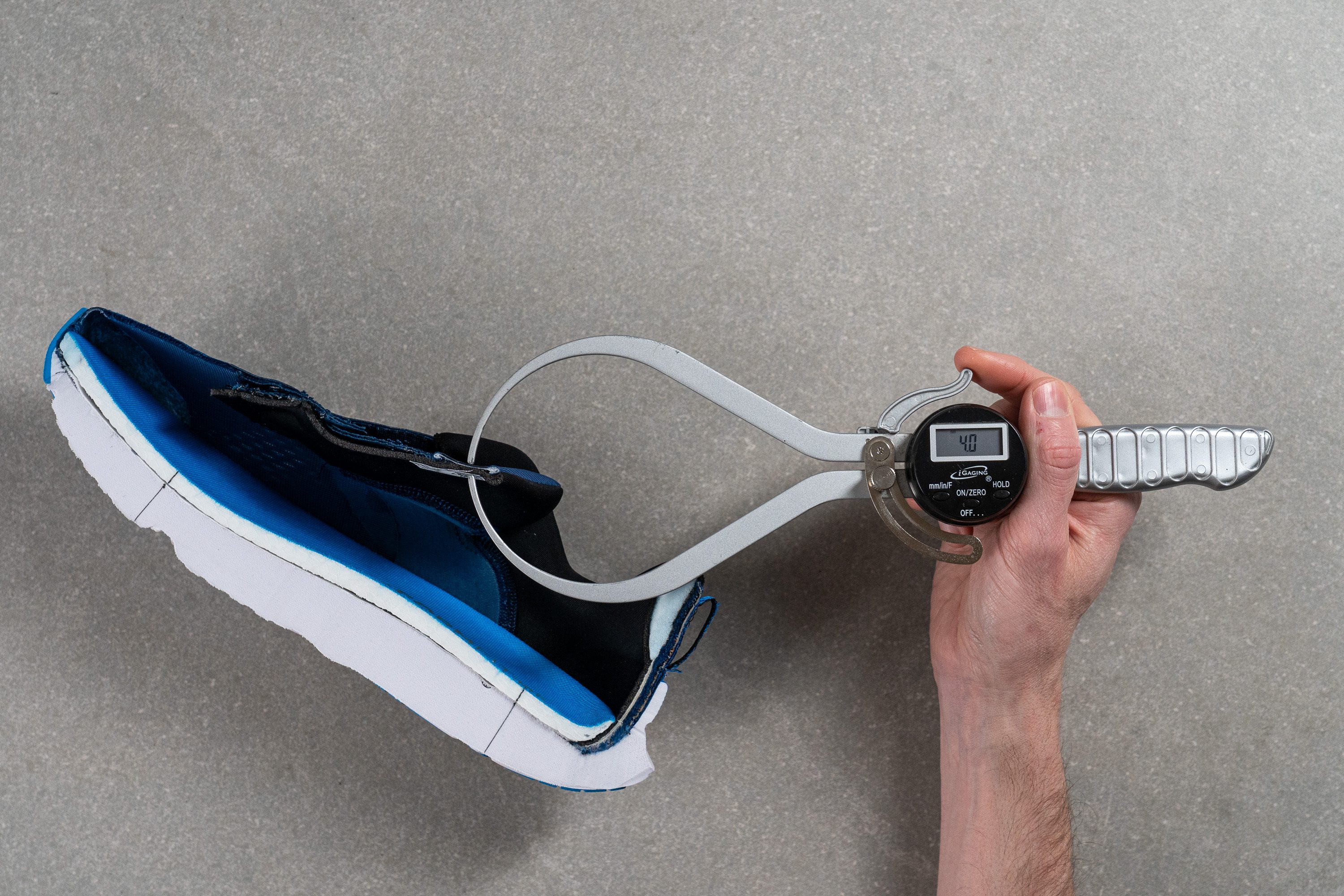
| Guide 17 | 4.0 mm |
| Average | 5.8 mm |
Tongue: gusset type
We were happy to see a half-gusseted tongue again—it's a great fit for this shoe. Just like the last version, it shows that sticking to what works is sometimes the best move.
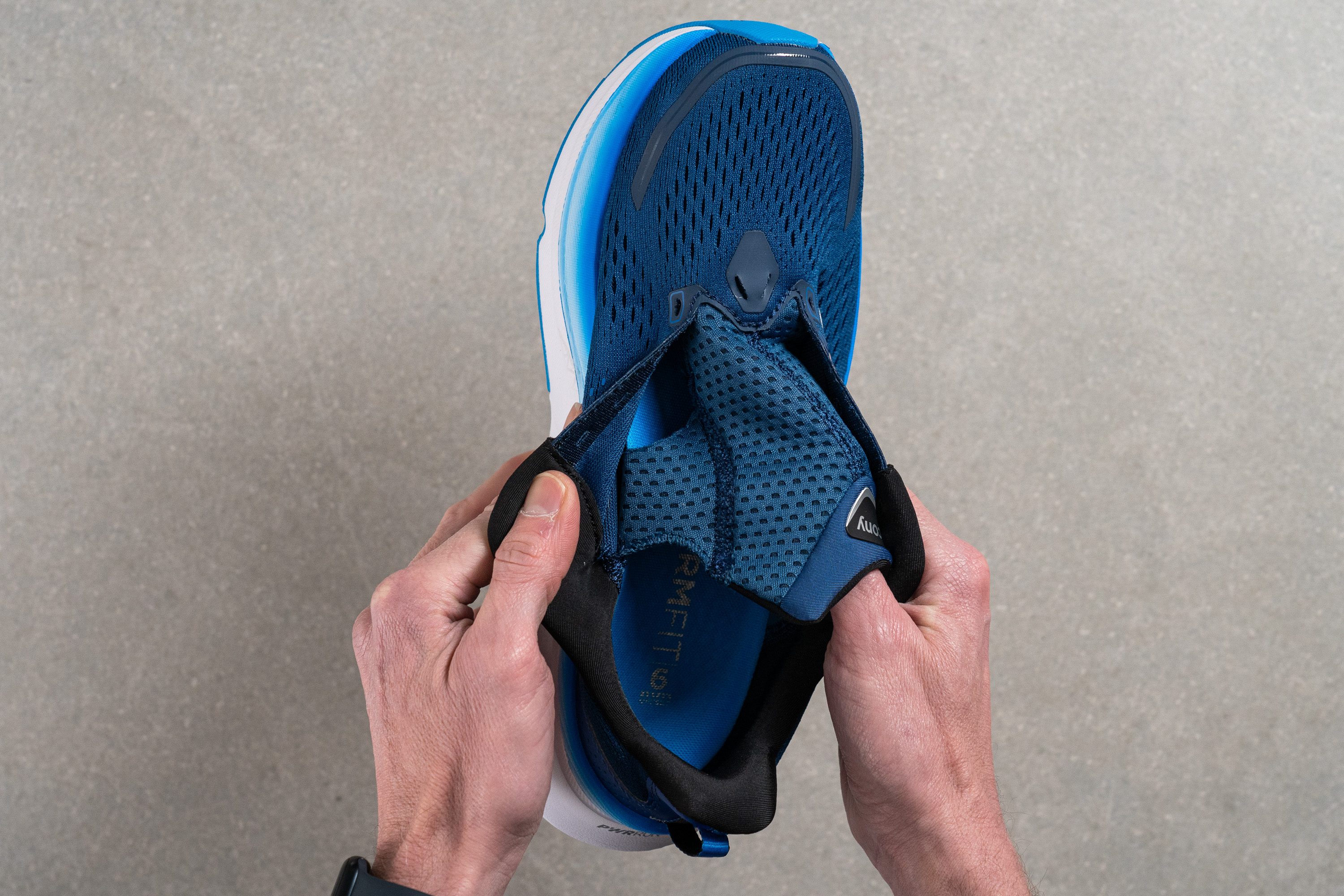
| Guide 17 | Both sides (semi) |
Heel tab
The heel boasts a stylish and practical finger-loop pull tab, making it effortless to slip your feet into the Guide 17.
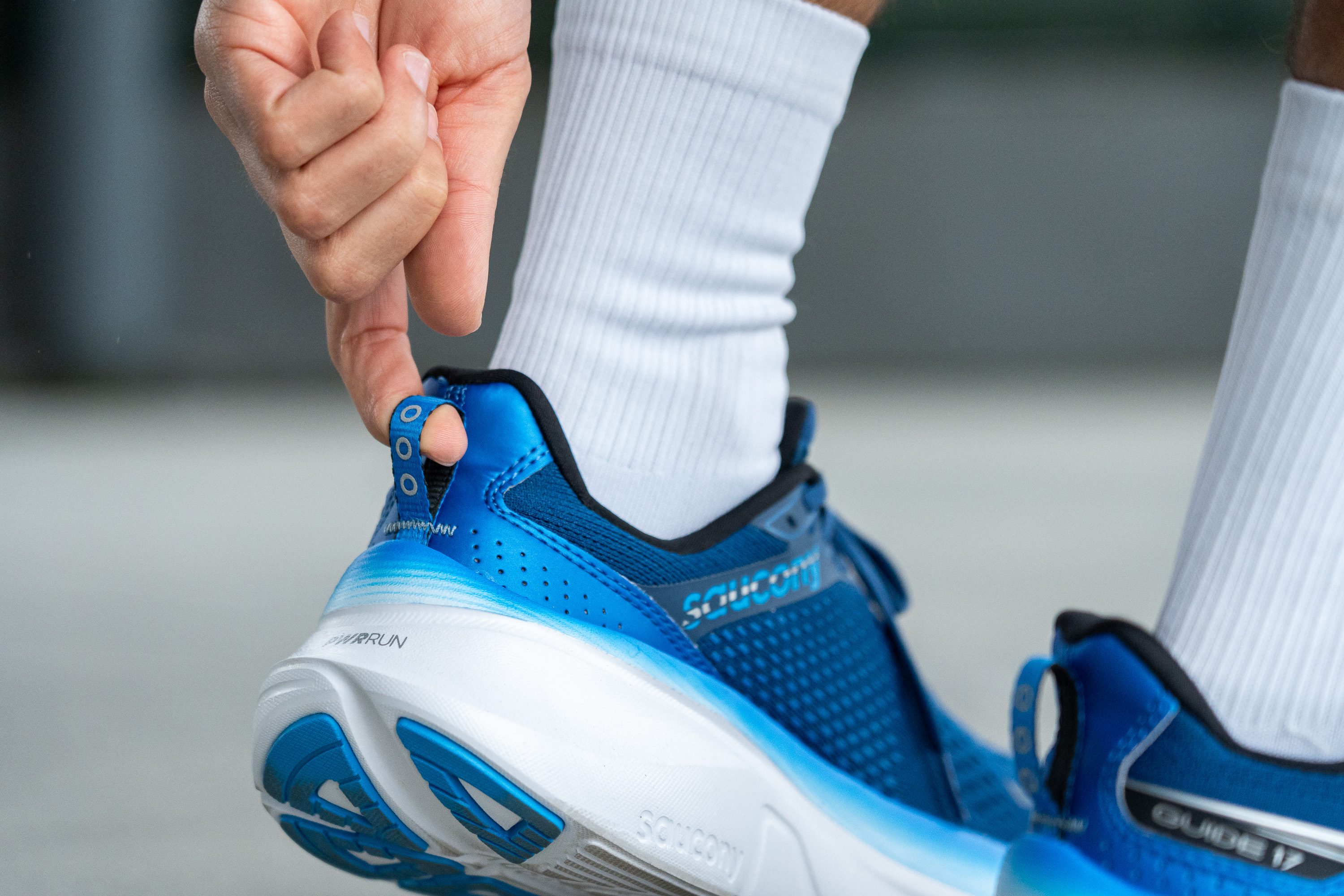
| Guide 17 | Finger loop |

